 Nuclear-powered attack submarines (1960-69), service 1961-1993: USS Sturgeon, Whale, Tautog, Grayling, Pogy, Aspro, Sunfish, Pargo, Queenfish, Puffer, Ray, Sand Lance, Lapon, Gurnard, Hammerhead, Sea Devil, Hawkbill, Bergall, Spadefish, Seahorse, Finback, Narwhal, Pintado, Flying Fish, Trepang, Bluefish, Billfish, Drum, Archerfish, Silversides, William H. Bates, Batfish, Tunny, Parche, Cavalla, Glenard P. Lipscomb, L. Mendel Rivers, Richard B. Russell (SSN-537 to 687)
Nuclear-powered attack submarines (1960-69), service 1961-1993: USS Sturgeon, Whale, Tautog, Grayling, Pogy, Aspro, Sunfish, Pargo, Queenfish, Puffer, Ray, Sand Lance, Lapon, Gurnard, Hammerhead, Sea Devil, Hawkbill, Bergall, Spadefish, Seahorse, Finback, Narwhal, Pintado, Flying Fish, Trepang, Bluefish, Billfish, Drum, Archerfish, Silversides, William H. Bates, Batfish, Tunny, Parche, Cavalla, Glenard P. Lipscomb, L. Mendel Rivers, Richard B. Russell (SSN-537 to 687)Cold War US Subs
GUPPY | Barracuda class | Tang class | USS Darter | T1 class | X1 class | USS Albacore | Barbel classUSS Nautilus | USS Seawolf | Migraine class | Sailfish class | Triton class | Skate class | USS Tullibee | Skipjack class | Permit class | Sturgeon class | Los Angeles class | Seawolf class | Virginia class
Fleet Snorkel SSGs | Grayback class | USS Halibut | Georges Washington class | Ethan Allen class | Lafayette class | James Madison class | Benjamin Franklin class | Ohio class | Colombia class
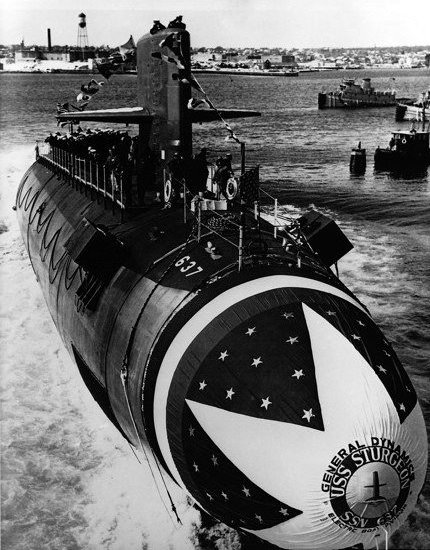 The largest US Navy class submarines class since 1945. Having a scale comparable to the mythical Gato/Tench/Balao that roamed the Pacific but with nuclear powered vessels that were lightyears ahead in technology, is what the Sturgeon tried to achieve. There was a practical goal, easy to justify to the Congress: Replacing the “fleet snorkels”, precisely these WW2 submarines modernized under the GUPPY program as a stopgap. The process to get there needed a good base design to succeed, and it was the Tresher/Permit class.
The largest US Navy class submarines class since 1945. Having a scale comparable to the mythical Gato/Tench/Balao that roamed the Pacific but with nuclear powered vessels that were lightyears ahead in technology, is what the Sturgeon tried to achieve. There was a practical goal, easy to justify to the Congress: Replacing the “fleet snorkels”, precisely these WW2 submarines modernized under the GUPPY program as a stopgap. The process to get there needed a good base design to succeed, and it was the Tresher/Permit class.
The design was just repeated and improved for a final 37 hulls ordered for a total of 1194 million dollars shared between six naval shipyards. The first, SSN-537 Sturgeon was laid down in August 1963 at Electric Boat. The last one, SSN-687 was Richard B. Russell in 1971, completed in August 1975. They made the bedrock of a renewed submarine fleet for three decades, before the large Los Angeles class took over until the end of the cold war.
The Sturgeon class was discarded in the 1990s with few exceptions, and some boats were transformed for trials, preparing the way for the Los Angeles: SSN 671 Nawrwhal and SSN 685 Glenard P. Liscomb.
All in all, the subject is to vast to be seen in one go. There will be two parts, the first one about the tech behind the class and its evaluation, the second about their career. #usnavy #coldwar #usssturgeon #ussnarwhal #ussglenardpliscomb #SSN #sturgeonclass #nuclearattacksubmarines
The Sturgeon class History – PART I
Development of SBC-188A:
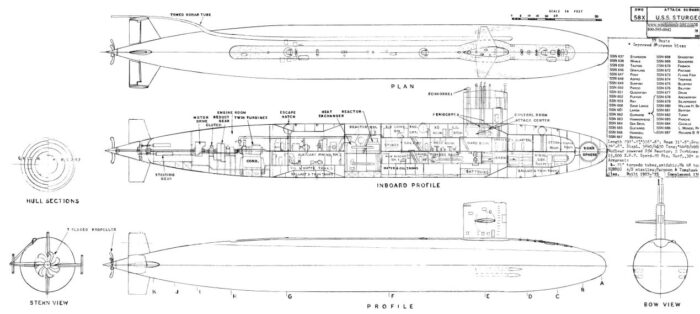
Seemingly original, declassified generic class plan, from a forum, see the sources.
The Sturgeon and Permit class were essentially the same boats, designed to improve on the Skipjacks, and designed almost around the large BQQ-2 sonar, which dictated the design, to specificatlly replace the WW2 legacy Gato class boats in their modernized form (GUPPY). Under SBC-188A they were an improved design, longer and with also a longer fin to integrate an extra periscopes and more antenna. But the torpedo tubes, sonar, hull shape, inetrnal accomodation and powerplants were unchanged. Production thus could start after a few adjustments in the various yards contracted, namely: -General Dynamics (Electric Boats) in Groton Conn. and Quincy, Mass.: 14 boats for 440 million dollars
-Newport News in Virginia: 9 boats for 282 M dollars
-Litton Systems Inc. in Pascagoula, Mass.: 6 boats for 196 M dollars
-New York Shipbuilding Corp Camden NJ: 1 boat (33.5 million dollars)
-Mare Island in vallejo Cal.: 5 boats for 161.9 million dollars
-Portmouth Naval Dockyard New Hampshire: 2 boatd for 79.9 million dollars.
In total 22 contracts for various tranches for 1,195 milllion dollars, unprecedented.
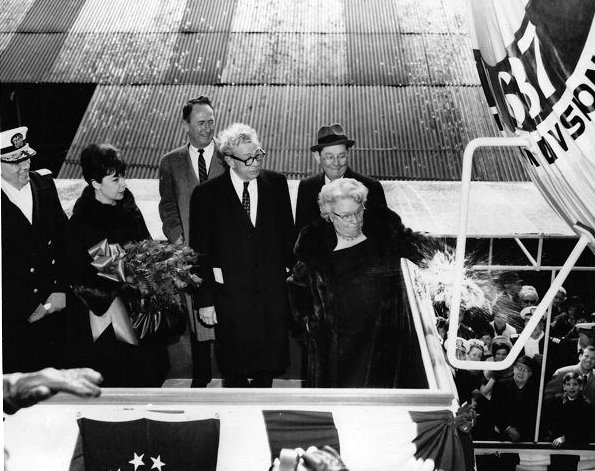
USS Sturgeon launch at Electric Boat in Groton, baptised by Mrs L.Carver, wife of senator Everett Dirksen on 26 Februart 1966. She was launched stern first.
The Sturgeon class (“637 class” for some) were nuclear-powered fast attack submarines in service from the 1960s until 2004 and the workhorses until gradually replaced by the Los Angeles. The post- cold war Seawolf and Virginia-class were a few due to budget cuts and “peace dividends” that seeing a decrease of the US submarine force, albeit it was put on hold due to the recent expansion of the Chinese PLAN and changing situation in Asia. The Sturgeons were an extrapolation of the Tresher design. The lost of USS Tresher, prototype for the Permit class, led to the creation of SUBSAFE program that was successfully implemented, preventing any future submarine loss so far.
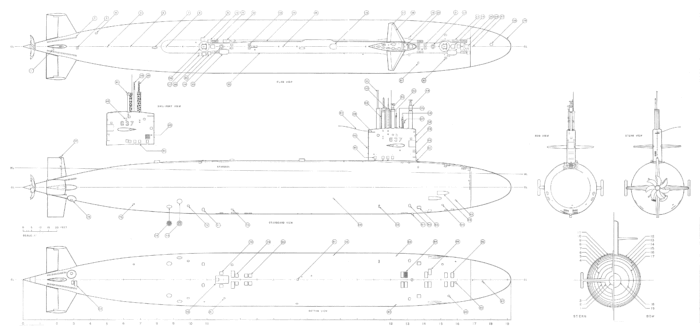
Sturgeon plan, all four views, sections and sail, extract from the drawings database src
First off, the Sturgeons were almost considered part of the Pemrit class, assimilated as a sub-class of the latter, in opposition to the much larger Los Angeles class. SSN 612 and 615 are usually included in the Permit group and together both classes made the largest complement built by the United States since 1945, subdivided (For Conways and many other authors) into the Permit and Sturgeon classes. USS Thresher was famously lost on diving trials on 10 April 1963.
The Permit followed the Skipjack class and were quite different. They combined a stronger hull for deeper diving with an advanced long-range BQQ-2 sonar and its associated SUBROC missile. Diving depth was reportedly 1300ft (396.2m). Later units were lengthened to install the larger BQQ-5 sonar, replacing the BQQ-2. The extra space is free flooding, while the underwater displacement rose by about 200t to 350t (SSN 613-615 and most Sturgeon class submarines).
Ultimately all of these units will have BQQ-5, which was a game changer. The USN had the biggest underwater ears in the entire universe. They all will ultimately receive the Mk 117 fire control system in place of their current Mk 113, and had dedicated facilities for Harpoon anti-ship missile control. Nevertheless, SUBROC is an analog, not digital weapon, while the Mk 117 was a first fully digital fire control system, so the long range ASW capability (except as provided by the Mk 48 torpedo) was lost. SSN 613 and SSN 615 were, in effect, prototype Sturgeons with heavier machinery, taller fins (20ft rather than 13.8 ft or 15 ft), improved safety features (Subsafe programme), and lengthened hulls at 292 ft 3in rather than 278 ft 6 in. SSN 678 and later units were 302 ft long. SSN 666, 672 and others were modified to carry a DSRV (submarine rescue vehicle) aft, for launch and recovery while submerged.
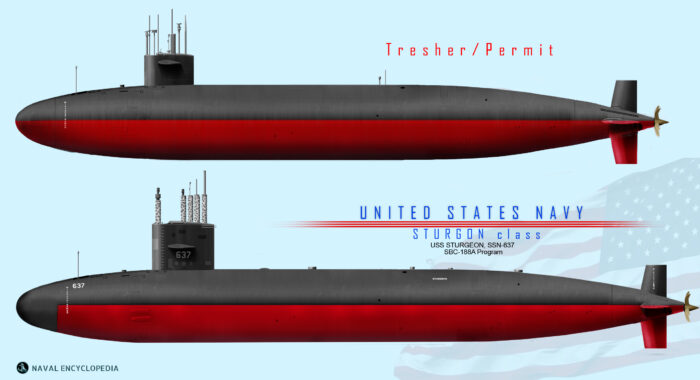
Sturgeon and Permit class comparison
As officially described in 1979, the Thresher class design compromises included a low sail, few periscopes and antennas, limited electronics. The reduced sail height was accepted to minimize speed loss, given the fixed reactor power of the SSW. The SSN 637 class was considerably enlarged for a combination of quieting and additional electronics, us well as improved internal arrangements. Presumably the electronics was a combination of sonar signal processing and torpedo control, one control console being required for each wireguided torpedo.
Design of the class
These submarines were intended primarily for ASW warfare, and for this, boasted a large spherical sonar array, completely filling their bows, so that like the previous class, the whole torpedo battery was down to a pair of tubves either sides, abreast the fin to fire diagonally from the hull. The advantage of the formula, compounded by a larger hull, was to increase the torpedo room and storage. There was just a greater and easier choice of weapons for each tube, giving a captain more options.
There were production improvements along the way. With that many submarines between six yards, construction techniques were streamlined and improved methods communicated between yards. In official documentation several milestones were achieved, in FY1972 three units were delivered from 12 to 52 months late, but two were delivered 2 months earlier than scheduled. It seems delays were linked to the priority to new Polaris subs, creating workforce relocations and bottlenecks. The one which was the most late was USS Guitarro, made in vallejo and which construction was stopped entirely as she sank at dockside, was refloated and completed after repairs.
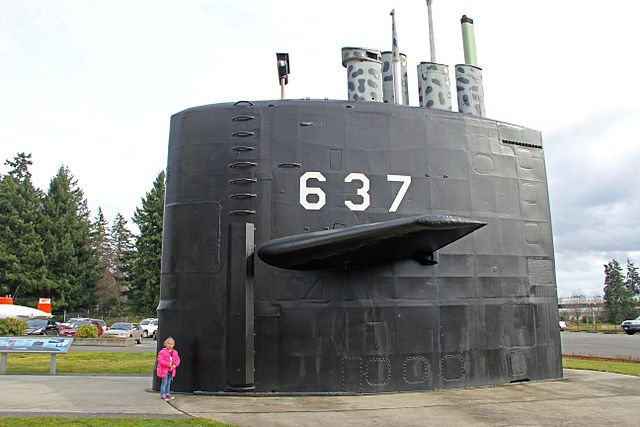
The sail of USS Sturgeon as preserved today
Hull and general design
a stronger hull for deeper diving with an advanced long-range BQQ-2 sonar and its associated SUBROC missile; diving depth is reportedly 400m. Later units were lengthened to allow the installation of a BQQ-5 sonar in place of BQQ-2; the extra space is free flooding, and underwater displacement rises by about 200t to 350t (SSN613-615 and most Sturgeon class submarines); ultimately all of these units will have BQQ-5. All will also ultimately receive the Mk 117 fire control system in place of their current Mk 113, providing facilities for Harpoon anti-ship missile control. However, since SUBROC is an analogue rather than a digital weapon, and Mk 117 is a fully digital fire control system, the long-range ASW capability (except as provided by the Mk 48 torpedo) is being lost. SSN613-615 were, in effect, prototype Sturgeons with heavier machinery, taller fins (6.1m rather than 4.2m or 4.6m), improved safety features (‘Sub-safe’ programme), and lengthened hulls.
As officially described in 1979, Thresher class design compromises included a low sail, inadequate numbers of periscopes and antennas, and limited electronics. The reduced sail height was specifically accepted to minimize the speed loss, given the fixed reactor power of the S5W. The SSN637 class was considerably enlarged for a combination of quieting and additional electronics, as well as improved internal arrangements. Presumably the electronics was a combination of sonar signal processing and torpedo control, one control console being required for each wire-guided torpedo.
The Sturgeons were lengthened but kept the previous five-compartment arrangement:
-Bow compartment
-Operations compartment
-Reactor compartment
-Auxiliary machinery room no. 2
-Engine room.
The extra length was in the operations compartment. It also benefited longer torpedo racks to accommodate more Mark 37 torpedoes, most advanced at the time. While under late design, these were redesigned to SUBSAFE requirements just as the construction of the first ships was underway. This included revision of the seawater fairings and main ballast as other systems for improved safety. But where the Sturgeons really stands out was their much larger sail, a critic of the compromied Permit class, whhcih tiny sail comparted to the Skipjack saved speed, so that a second periscope could be added and more intelligence-gathering masts. The sail also reduced the risk of broaching surface in heavy seas.
The fairwater planes were now also mounted on the sail and rotating 90 degrees, a reversion to the Skipjack system. Whe breaking through ice, their attack edge was much reinforced in order to pierce and cut through thin ice.
The used of the same S5W reactor, albeit proven and very reliable, with a longer hull, displacement and larger sail meant increased drag, decreased agility, and lowered top speed at 26 knots or 48 km/h. The last nine Sturgeons (FY1972) were all further lengthened of 10 feet (3 m) to add extra electronic equipment and improve habitability as well as facilitate installation of dry deck shelters from 1982. In the official records it was accepted to loose .4 knots to increase crew capacity from 98 to 100. Based on two and a half decks a further tranche enabled indeed a lot of extra space in the pressure hull.
Powerplant
The S5W powerplant was the same as the Skipjacks and Permit class, while the Sturgeons were was much greater by at least 800t so they ended considerably slower, with about 26kts instead of 28 kts and 30+ knots of the Skipjacks. Some in the Navy saw this regression as a perile compare to fast Soviet subs, especially the Alfa class saild to be capable of 41 knots. They were also slower than most torpedoes. There were thus three attempts to improve propulsion. By default, the Sturgeons were to share their bronze propeller with the Permit class, an early 5 bladed model; But after trials it was changed for a 7 bladed one on all boats. Tests were made with a counter-prop model. The design of the rudder and stern planes were exactly the same as the Permit class.
USS Jack tested contrapropellers on her shaft, an arrangement that was unsuccessful and never adopted. USS Narwhal was lenghtened and modified to test an alternative natural convection powerplant, the S5G rather than Westinghouse S5W (see later). Glenard P Lipscomb was further lenghtened to integrate a seto or new turboelectric propulsion, and both aimed at regaining some speed but more so, for quietness. In was theorized indeed by many that the loss of speed could be compensated by many ways:
Not to be detected on the first place, combined a a much greater detection capability, giving the advantage of surprise, and better torpedoes, faster and with a longer range, as well as better ECM and underwater decoys for protection.
Soundproofing
There were improvements across the board:
The bow covering the sonar sphere was made from steel and later glass reinforced plastic (GRP) in booted and not booted variants. The steel “Booted domes” were coated with a 0.5 inches (50 mm) layer of rubber. The GRP domes improved its performance. However for intelligence gathering nothing could beat the towed-array sonar, much more sensitive.
Otherwide soundproofing followed the path of the Permit class, with a basic coating, fairwater intakes and scoops all improved to avoid bubbles, even the torpedo doors, and all internal systems put on rafts and with rubbzerized liaisons and fixtures connecting them to the hull. Several Sturgeon boats were modified still to improve on the original design and test extra reduction noise measures:
–HMS Puffer (SSN-652) was given Raytheon Harmonic Power Conditioners eliminating an electrical bus noise problem inherent in the class. There was an harmonic conditioning of the power system to avhieve this. This simple fix was ported to the entire class.
–USS Batfish (SSN-681) and Bluefish (SSN-675) had the SHT (Special Hull Treatment) in a regular dydock overhaul, a new type of coating further reducing noise and sonar profile.
–USS Glenard P. Lipscomb (SSN-685) was completed with a brand new turbo-electric system for her main propulsion, eliminating the standard reduction gear drive from the steam turbines. Her hull was lenghtened to incorporate the massive motor and associated generators, reaching to 365 ft (111.25 m). Trials however were not considered successful as the speed fell to 23 knots (43 km/h). There were also scored of reliability issues. The experience was not lost to the Los Angeles class though.
–USS Narwhal (SSN-671) was another, even quieter sub-class under the SCB 245 program in parallel to the Sturgeon class (SCB 188A). The whole forward section was a repeat of the Sturgeon-class but with a swap of compartments: The diesel generator was relocated further aft and a slightly greater beam was used to better soundpoof it. More so, she iuntegrated the larger, natural circulation S5G reactor coupled with a new type of direct-drive turbine which were designed from the start to be quieter, and many other features. Only compromise were towards the SUBSAFE regulations, due to her unique main seawater system. But this made Narwhal the quieterst submarine ever in service, worldwide.
Armament
By the late 1960s, the Sturgeons offered more possibility to a Submarine captain that any other type in inventory. There was a choice between long ASW torpedoes, nuclear torpedoes (Astor, or Mk 45, now retired), long anti-ship torpedoes, or SUB-ROC and then Harpoon (tested in Permit in 1976) and finally Tomahawk. Total weapon capacity was still somewhat restricted, so about twenty torpedoes were in stowage most of the time, albeit variety was still there. In some case, there were up to 26 carried, like on SSN-671 Narwhal, but the normal was 23 at best. The adoption of the Mk 48 torpedo was to replaced replace both the long ASW and long anti-ship weapons wheeras the nuclear-tipped Mk 45 was discarded notably as it it consumed valuable internal space but and unlikely to be ever used in action.
The Harpoon, Tomahawk brought an amazing long range strike capacity that could fully embrace the new BQQ-5 sonar detection range, and it was completed by the UUM-44 SUBROC, the Mark 67 SLMM and even Mark 60 CAPTOR mines as well as the MK-48 and ADCAP torpedoes. In any case, but the late 1980s the Sturgeons had the best weapon array of any submarine class in service. Albeit not true SSGN in the Soviet sense, due to the smaller size of their vectors, this was still a considerable upgrade in capacity.
Mark 37 torpedoes
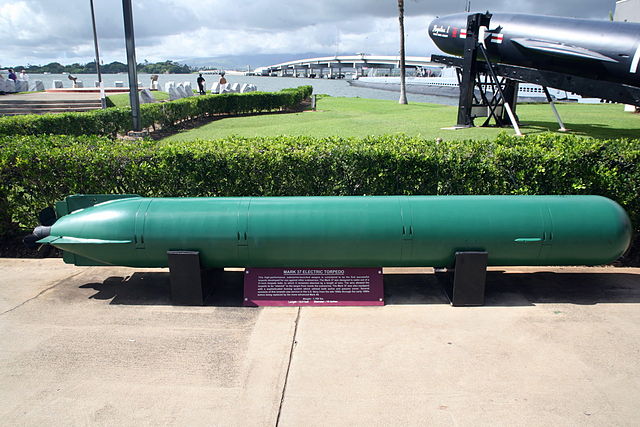
A post-WW II electric acoustic torpedo forst deployed in 1957. The Skipjacks were probably given the 1960 Mark 37 Mod 1, specs below. The 19″ (48.3 cm) Mark 37 and Mark NT37 Designed about 1956 (last introduced, Mod 3: 1967) became the standard US Submarine launched ASW torpedo of the 1960s and until the 1990s.
⚙ specifications Mark 37 TORPEDO |
|
| Weight | 1,660 pounds (750 kg) (mod.1) |
| Dimensions | 161 inches (410 cm) (mod.1) x 19 inches (48 cm) |
| Propulsion | Mark 46 silver-zinc battery, two-speed electric motor |
| Range/speed setting | 23,000 yards (21 km) at 17 knots, 10,000 yards (9.1 km) at 26 knots |
| Warhead | 330 pounds (150 kg) HBX-3 high explosive with contact exploder |
| Max depth | 1,000 feet (300 m) |
| Guidance | Active/passive sonar homing, passive 700 yards (640 m) from target, active and wire-guidance |
Mark 48 torpedoes
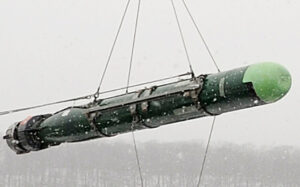 Adopted by the Skipjacks and Permit class in addition or replacement for the Mark 37 in the mid-1970s, the Mark 48 and its improved Advanced Capability (ADCAP) variant were heavyweight submarine-launched torpedoes. They were designed to sink deep-diving nuclear-powered submarines and high-performance surface ships. They entered service in 1972 for the first mod, 1988 for the ADCAP (photo).
Adopted by the Skipjacks and Permit class in addition or replacement for the Mark 37 in the mid-1970s, the Mark 48 and its improved Advanced Capability (ADCAP) variant were heavyweight submarine-launched torpedoes. They were designed to sink deep-diving nuclear-powered submarines and high-performance surface ships. They entered service in 1972 for the first mod, 1988 for the ADCAP (photo).
⚙ specifications Mark 48 TORPEDO |
|
| Weight | 3,434 lb (1,558 kg) |
| Dimensions | 19 ft (5.8 m) x 21 in (530 mm) |
| Propulsion | swash-plate piston engine; pump jet Otto fuel II |
| Range/speed setting | 38 km/55 kn or 50 km/40 kn |
| Max depth | 500 fathoms, 800 m (2,600 ft) est. |
| Warhead | 647 lb (293 kg) HE plus unused fuel, proximity fuze |
| Guidance | Common Broadband Advanced Sonar System |
Mark 45 ASTOR nuclear torpedoes
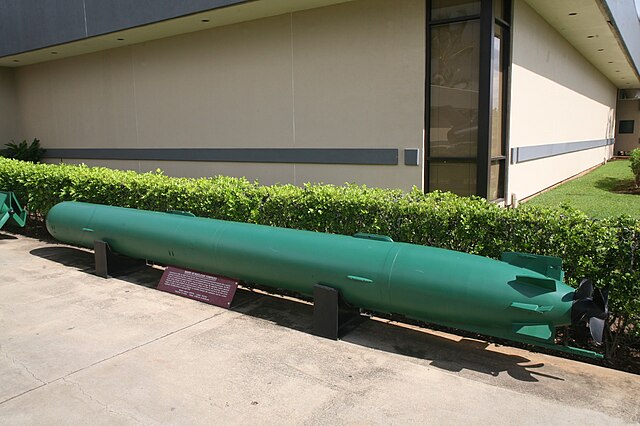
These very particular torpedoes were designed in part in respsonse to Soviet rumored small warheads tests and probably adoption on torpredoes and for general tactical use as per the new wide scale 1960s US deterrence policy. The Mark 45 anti-submarine torpedo (ASTOR) was submarine-launched and wire-guided usable against high-speed and deep-diving Soviet submarines. It was first recommended for implementation by 1956 Project Nobska a summer study on submarine warfare. Its was 19-inch (480 mm) in diameter while carrying a W34 nuclear warhead and under direct control maintained between the torpedo and submarine until detonation. It had no homing capability. The design was completed in 1960, 600 were built between 1963 and 1976 until replaced by the Mark 48 torpedo.
⚙ spec. Mark 45 ASTOR |
|
| Weight | 2,400 pounds (1,100 kg) |
| Dimensions | 227 inches (580 cm) x 19 inches (48 cm) |
| Propulsion | Electric |
| Range/speed setting | 40 knots, 5–8 miles (8–13 km) |
| Warhead | W34 nuclear warhead, yeld 11 kilotons |
| Guidance | Gyroscope and wire |
UM-44 SUBROC missiles
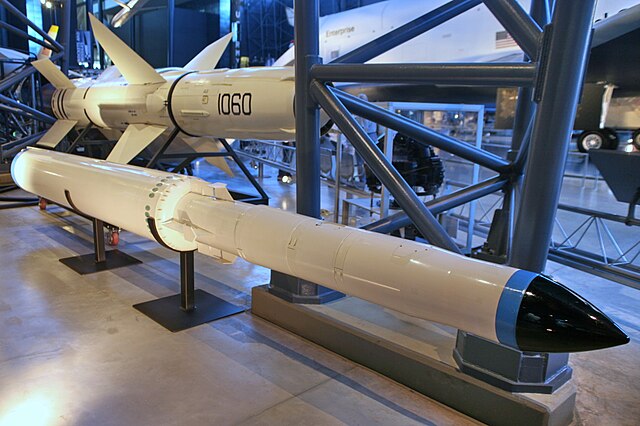
The UUM-44 SUBROC (SUBmarine ROCket) was deployed as a long range tube-launched anti-submarine weapon. It carried a 250 kiloton thermonuclear warhead if configured as such, at a more safer distance than the Mark 45 ASTOR torpedo, and essentially replaced it. This weapon was recommended for implementation by 1956 Project Nobska and development started in 1958, completed in 1963. SUBROC entered service with USS Permit in 1964, so basically soon after the class entered service. However the admiral in charge of weapons procurement stated this wepaon caused more problems than Polaris. Main requirement was to be launched through a 21-inch submarine torpedo tube, and after launch, the solid fuel rocket motor fired, the SUBROC container rapidly rose to the surface and the booster carrying the torpedo flew to destination on a predetermined ballistic trajectory. The reentry vehicle (warhead) at the set time separated from the solid fuel motor and its low kiloton W55 nuclear depth bomb dropped into the water, sank rapidly to detonate at a set depth prior to launch. Accuracy was not a problem.
The W55 (the missile) was 13 inches (33 cm) in diameter, 39.4 inches (100 cm) long, for 465 lb (211 kg) in weight and tactically this was an urgent-attack long-range weapon to strike submarine targets out of range without betraying the position of the launching submarine, and recalled ASROC or Ikara. The additional bonus was a ballistic approach to the target making it undetectable by the target and prevented evasive action. It was however less flexible in its use than Ikara or ASROC and could not be used in a conventional engagement.
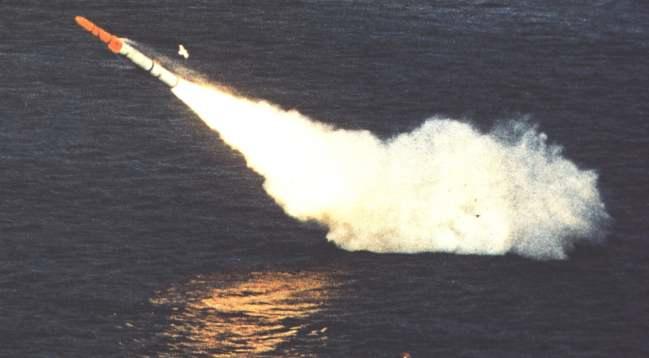
SUBROC production ended in 1968 and it was obviously never used in combat, with 285 W55 warheads decommissioned in 1990. SUBROC could not be exported either, even never shared with NATO allies. The planned UUM-125 Sea Lance was authorized in 1980, contract awarded to Boeing in 1982 but cancelled in 1990.
This weapon remains an interesting cold war weapon without true equivalent.
⚙ spec. UUM-44 SUBROC |
|
| Weight | 4,000 lb (1,800 kg) |
| Dimensions | 22 ft (6.7 m) x 21 in (53 cm) |
| Propulsion | Solid rocket booster |
| Range/speed | 55 km (34 mi), subsonic |
| Warhead | W55 1-5 kt (4.2 to 20.9 TJ)/25 kt (100 TJ), Depth Fuze |
| Max depth | Unknown |
| Guidance | Inertial guidance ballistic trajectory |
UGM-84 Sub-Harpoon missiles
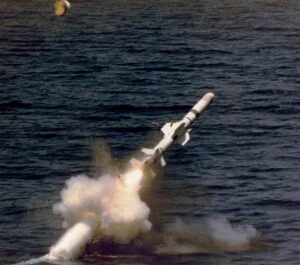 The Harpoon was the go-to antiship missile of the USN from 1977. With its amazing range it was tempting to offer the Permit, Sturgeon and Los Angeles classes this upgrade while in service when entering service in 1981. Indeed the UGM-84, name given to the submarine launched variant was fitted with a solid-fuel rocket booster and encapsulated in an upropelled canister using the tube initial propulsion to enable submerged launch at reasonable depth. The flexible wings were folded around the missile body and opened after the missile booster ignited, when it was propelled out of the canister, setup to reach the surface. The canister was partly burned out as the missile ingnited inside after its head popup.
The Harpoon was the go-to antiship missile of the USN from 1977. With its amazing range it was tempting to offer the Permit, Sturgeon and Los Angeles classes this upgrade while in service when entering service in 1981. Indeed the UGM-84, name given to the submarine launched variant was fitted with a solid-fuel rocket booster and encapsulated in an upropelled canister using the tube initial propulsion to enable submerged launch at reasonable depth. The flexible wings were folded around the missile body and opened after the missile booster ignited, when it was propelled out of the canister, setup to reach the surface. The canister was partly burned out as the missile ingnited inside after its head popup.
When freed, the UGM-84 raced to its target as a sea-skimming missile on predeterminated target data fed before launch, and then homing took over in full autonomy when reaching its final leg to the target. Data came from radar or satellite, and sonar if needed. This gave US Navy SSNs an unprecedent range of 67 nmi (124 km) for the Block II for example, at Mach 0.71 to 0.9. Normal provision was four of them on board a Permit class from the 1980s. It was also designated GWS-60 (UGM-84B in UK service) and exported to South Korea and Egypt. The Permit class had the UGM-84A and potentially upgraded to the UGM-84C (Block Ic), UGM-84D from 1985, less likely UGM-84G and UGM-84L so close to retirement.
⚙ spec. UGM-84A Sub-Harpoon |
|
| Weight | As regular missile + canister |
| Dimensions | Canister 21-in, c20ft long |
| Propulsion | solid propellant booster motor |
| Range | 130 to 220 km depending on version |
| Speed | Mach 0.9 |
| Warhead | 220 kg warhead |
| Guidance | Initial intertial, active radar homing terminal, later GPS |
Late SEAL Conversions
Six of these boats were later converted to accommodate Dry Deck Shelters, in order to operate sixteen SEALs and their swimmer delivery vehicles. The test unit was SSN 684, modifed between August and December 1982, followed by SSN 678, 679, 684, and then under the FY90 programme SSN 680, 082, and 686, the last delivered in 1992, SSN 666 and 672, and others have been modified to Guide and laych a DSRSV salvage vehicle. Between january 1987 and 1991, USS Parche (SSN 683) was rebuilt at Mare Island for special operations and lenpthened by moving forward her sail, for a total length of 393 ft and a dispacement of 6,140 tonnes fully loaded.
Sensors
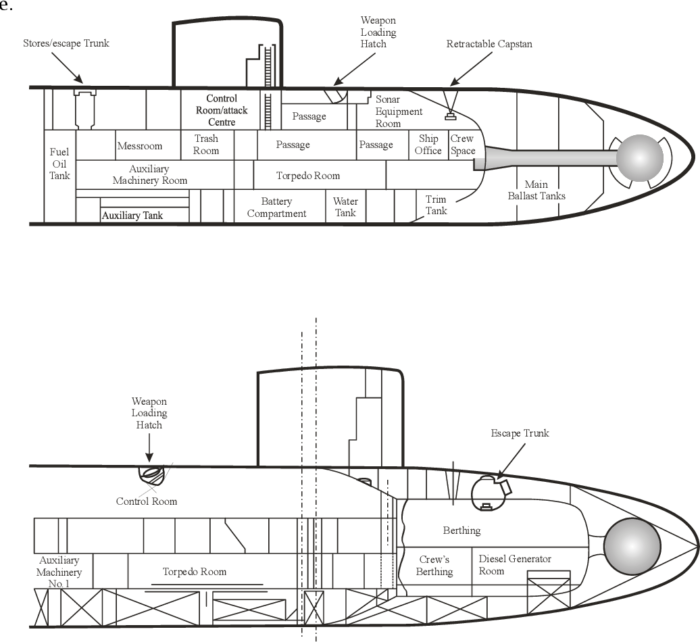
Fwd compartment differences, Los Angeles versus Permit/Sturgeon class, from pinterest
The Thresher-class came up with the new passive SONAR AN/BQQ-2, fitted into the bow, filling it entirely and forcing the torpedo room back amidships. The Sturgeons capitalized on this configuration and even used extra bow space to mount a better sonar.
The standard issue suite comprised the BPS-14 or BPS-15 radar, BQQ-2 (BQS-6 + BQR-7) sonar suite, BQS-8 and BQS-12 sonars, the WLR-4 ECM suite and the Mk 113 CCS.
From SSN-665 to 670, 672-677: The BQS-13 sonar replaced the model 12. From SSN-678 to 684, as well as SSN-686 and 687 was adopted the larger and better BQQ-5 sonar suite. The Mk 113 CCS was eventually replaced by the Mark 117 later in their active life as other systems.
In the 1980s, USS Sturgeon, Whale, Tautog, Grayling, Pogy, Aspro, Sunfish, Pargo, Queenfish, Puffer, Ray, Sandlance, Lapon, Gurnard, Hammerhead, Sea Devil, Guitarro, Hawkbill, Bergall, Spadefish, Seahorse, Finback, Pintado, Flying Fish, Trepang, Bluefish, Billfish, Drum and Glenard P. Lipscomb receive the new BQQ-5 sonar suite and the Mk 117 CCS, a considerable upgrade.
AN/BQQ-2 (BQR-7 + BQS-6) bow sonar:
This model was adopted fist for USS Tullibee and also mounted on the Tresher/Permit class SSNs. It combined an Active BQR-7 and Passive PQS-6 arrays, for Active/Passive Search & Track with an unprecedented range of 74.1 km, well beyond the range of torpedoes. Thus, the adoption of SUBROC made a lot of sense and gave USN attack submarine an edge over the Soviet Navy.
The successor AN/BQQ-5 sonar suite was a real improvement as it came with a retractable towed array, the “snake”, for an even more efficient detection sensibility far from the host submarine.
AN/BQQ-5 bow sonar:
Same as the BQQ-2, bow-mounted spherical array installed at first on the SSN 637 and later SSN 688 (Los Angeles). It had a low frequency passive and active search and was an attack sonarmade by IBM which provided a comprehensive digital suite. The AN/BQQ-5 was designed for simplifications, with a single operating console and a way to display its various modes sequentially with setups on screens. However later it was asked to redesign the system with three consoles, causing all sorts of issues, notably extra crew and space, leading to the new “long hull” Sturgeons.
It comprised the TB-29 towed array and the Combat Control System (CCS) Mk 2 (or collectively QE-2 System) later integrated from the start on the Los Angeles (SSN-688) and Ohio (SSBN-726) class submarines. There was a radical increase in acoustic performance and generally improved combat control capabilities.
Later upgrades like the OPEVAL (AN/BQQ-5E system) were not installed as FY1998 as well as the AN/BSY-1 ECP 1000.
Exact range is classified.
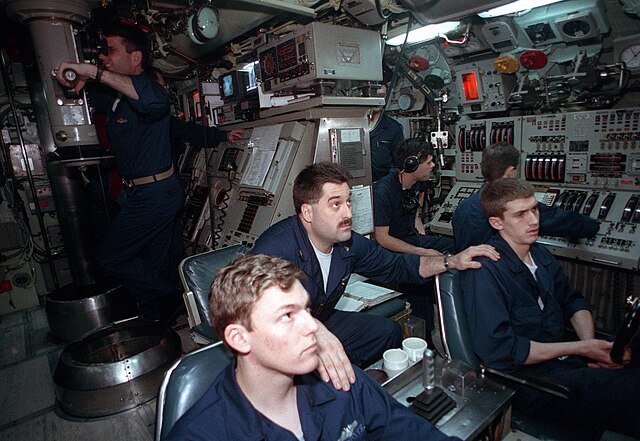
USS Pargo drive section, command center
BPS-14 radar:
Raytheon medium-range surface search and navigation radar featuring a horn antenna, operated from inside the submarine. Works in I-J (8-20 GHz) up to 40 nm (73 km).
BPS-15 radar:
Improved model developed by Northrop Grumman, low-power, surface search and navigation radar with a karger horn array at 40-in (1,016-mm) aperture. Replaced by the AN/BPS-16. mounted on the long hulled Sturgeons, Los Angeles and OHIO class (BPS-15A).
BQS-8 sonar:
Ice-navigation sonar: Upward-oriented sonar projector radiating energy spherically, with multiple reflection paths generated under the ice.
BQS-12 sonar:
Component of the AN/BQQ-5C(V)2, Sturgeon class (long hull), Hull Sonar with Active/Passive Search & Tracking and known max Range of 74.1 km.
Raytheon’s AN/BQS-13 was a part of the AN/BQQ-5 sonar suite, also including TB-12/TB-16 and TB-23/TB-29 towed sonar arrays as a medium-frequency, multi-function sonar array installed on Sturgeon-class boats. Photo
Mark 113 Fire Contol System:
This very advanced fire control system for its time, computerized, combined several displays manageable by a single fire control operator. It comprised the Mk 78 Target Motion Analyzer digital computer which memory module has 1024 round magnets with wires wrapped around them. The Mk 78 TMA determined the Target’s course and speed adn sent the data to the Mk 75 AD.
The Mk 75 Attack Director is an analogue computer using synchros, servos, resolvers, and rheostats plus handcranks to input information displayed with counters and dials. The Mk 75 AD solves data targeting Problems and sends the Gyro Angle to the Torpedo.
The Mk 66 Torpedo Control Console was coupled with the Mk 47 Tone Signal Generator used for the Mk 48 Torpedoes, capable of sending new commands and course corrections after fire.
The Mk 50 Attack Control Console prepared the torpedoes launch, coupled with the Digital Interface Box (DIB).
The Mark 113 was replaced by the Mark 117 fire control system envisioned by some to do any thing and almost replace the operator, but in reality it just increased the training requirement. It was capable to manage longer range and missiles, as introduced in the 1980s.
The radar suite is unknown, likely the same as the Skipjack albeit simplified as the Permit’s fins were smaller. So one radar/aerial combined model.
Same with the EW suite it was probably limited.
Mark 117 Fire Contol System:
The first all digital fire control system and was forward fitted on the later 637 class and the SSN 688 and backfitted on the long hull and earlier 637s and the 594 classes.
more on the Los Angeles class.
WLR-4 ECM suite:
No data yet.
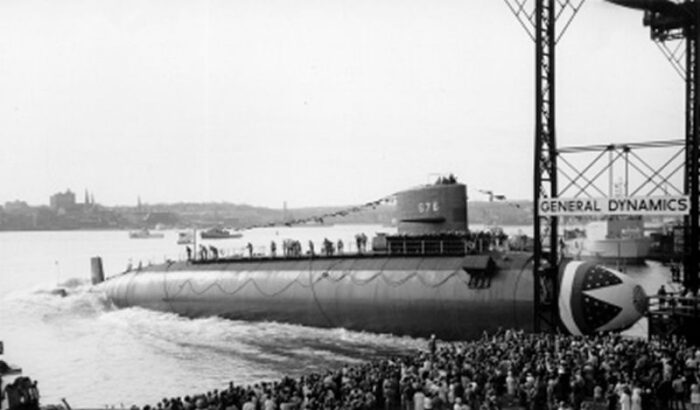
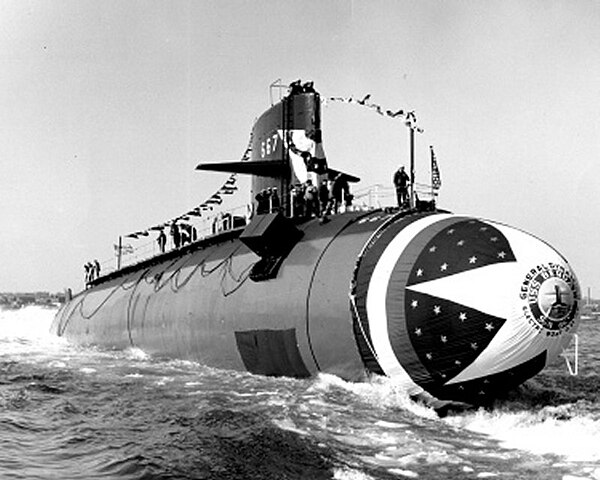
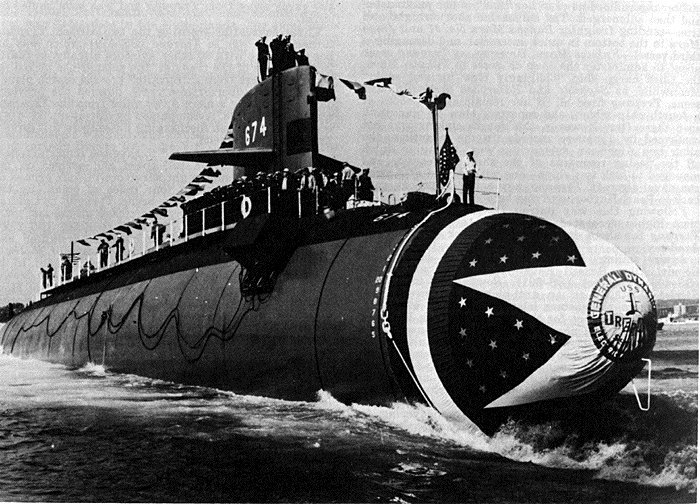
The launch of USS Billfish (top) and Bergall, Trepang (bottom).
⚙ specifications Sturgeon |
|
| Displacement | 3,640 long tons (3,698 t) surfaced, 4,640 long tons (4,714 t) submerged |
| Dimensions Short hull | 292 ft 3 in (89.08 m) |
| Dimensions Long Hull | 302 ft 3 in (92.13 m) |
| Dimensions beam/draft | 31 ft 8 in (9.65 m) x 24 ft 5 in (7.44 m) |
| Propulsion | 1 shaft S5W PWR, 2 steam turbines, 15,000 shp (11 MW) |
| Speed | 15 knots (28 km/h; 17 mph) surfaced, 26 knots (48 km/h; 30 mph) submerged |
| Range | Unlimited, except by food supplies |
| Armament | 4 × 21 inch (533 mm) TTs, Mark 37, Mark 48, UUM-44 SUBROC, UGM-84 Harpoon |
| Test Depth | 1,320 ft (400 m) |
| Sensors | BQQ-2 sonar (later BQQ-5), Mark 113 FCS (later Mark 117), ESM |
| Crew | 112 |
Improvements and Upgrades
1970s-1980s, USS Hawkbill, Pintado, William H. Bates and Richard B. Russell were modified to carry a DSRV submersible and by the early 1980s, the remainder were armed with four 4 Harpoon SSM (UGM-84) replacing notably the Mark 45 torpedoes.
In between 1982 to 1992, USS Archerfish, Silversides, William H. Bates, Tunny, Cavalla, and Mendel Rivers were modified to carry a Dry Deck Shelter (DDS) in order to carry and deploy 16 SEALs and their SDV. At the time, the Sturgeon class was considered somewhat obsolete and started to be phased out of their primary role and modified for special operations (like early Los Angeles batches recently).
In 1984, USS Guitarro and later USS Sturgeon, Whale, Tautog, Grayling, Pogy, Aspro, Sunfish, Pargo, Queenfish, Puffer, Ray, Sandlance, Lapon, Gurnard, Hammerhead, Sea Devil, Hawkbill, Bergall, Spadefish, Seahorse, Finback, Pintado, Flying Fish, Trepang, Bluefish, Billfish, Drum, Archerfish, Silversides, William H. Bates, Batfish, Tunny, Parche, Cavalla, Mendel Rivers, Richard B. Russell received eight Tomahawk BGM-109 cruise missiles, replacing older torpedoes.
 USS Narwhal SSN-671 sub-class (1967)
USS Narwhal SSN-671 sub-class (1967)

SSN671 was laid down at yard 182 at Electric Boat, Groton on 17.1.1966, launched on 9.9.1967, completed on 12.7.1969, stricken on 7.1999. She was special boat, designed under project SCB 245, remaining unique in her own class. Forward of the reactor compartment and inside a hull of larger diameter plus with her auxiliary diesel generator relocated from the bow compartment to the auxiliary machine room (operations compartment). What was really new was the replacement of the S5W by a unique natural circulation S5G reactor plus a direct-drive turbine propulsion plant. Two separate reactor tunnels each with their watertight doors allowed access to the engine room. This new experiment was done improve massively her acoustic stealthiness.
In addition to the S5G unit from (coupled with De Laval steam turbines) the design also integrated the following:
-Less powerful main coolant pumps with on and off for even quieter drive
-A scoop seawater injection for the main condensers to shut down the main seawater pumps at high speed
-Cross-connection of the main and auxiliary seawater systems
-New, larger direct-drive propulsion turbine operating on a low shaft speed (300 RPM) and without reduction gears
-Service turbine generators at lower rate: 1,200 RPM (vs. 3,600 rpm usually)
-No waist ballast tanks to eliminate vibration noise caused by the thinner outer hull, potentially vibrating.
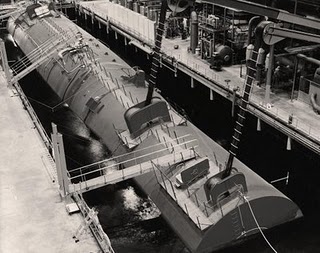 The S5G was made by General Eelectric, which always wanted to best Westinghouse for providing the Navy its own nuclear recator plant. The S5G was marketed as a revolution out of itself for submarines. It had had new primary coolant pumps only needed for very high speeds. The reactor core was designed with very smooth paths for the coolant, which thus, were smaller and quieter and less numerous. In fact they could be disconnected on demand, notably in areas and situations that needed extra discretion. This was sold as a truly quiet design but yet required a larger hull diameter and larger primary coolant piping compared to the S5W reactor. It could not be used on the Sturgeon class with a simple section addition, but was declined into the S6G that was adopted by the Los Angeles class and more so as aprecursor to the S8G reactor in the Ohio-class SSBN.
The S5G was made by General Eelectric, which always wanted to best Westinghouse for providing the Navy its own nuclear recator plant. The S5G was marketed as a revolution out of itself for submarines. It had had new primary coolant pumps only needed for very high speeds. The reactor core was designed with very smooth paths for the coolant, which thus, were smaller and quieter and less numerous. In fact they could be disconnected on demand, notably in areas and situations that needed extra discretion. This was sold as a truly quiet design but yet required a larger hull diameter and larger primary coolant piping compared to the S5W reactor. It could not be used on the Sturgeon class with a simple section addition, but was declined into the S6G that was adopted by the Los Angeles class and more so as aprecursor to the S8G reactor in the Ohio-class SSBN.
The normal propulsion setup still used steam turbines but instead of using the classic reduction gear unit was, a single, larher propulsion turbine was used without reduction gears, but using a lower rate from the start. The main reduction gears were identified indeed by specialists as one of the biggest noise makers. The problem now was to purchase and manage a massive main propulsion turbine, 12 feet in diametern 30 feet long.
The concept of a natural circulation plant was further refined and matured on USS Idaho (Ohio class) which had a rigorous performance shakedown to determine it was a success, recommended for fast-attack submarines. On the land facility (photo) the whole plant was floated in a large pool of water to be rotated along its long axis, simulating hard turns, torquing large gyroscopes mounted forward and determine if natural circulation (so without pumps) was still effective in hard turns, so with gravity. A clever use of piping and playing with voids allowed just that.

As a result of all this, USS Narwhal became the world’s quietest submarine of the time. The propulsion plant had to wait however to solve many issues. First off, the very large turbine operating at much lower shaft speed, still needed complex warm-up and cooldown procedures. The generators experienced blade failures when tested. Later improvements in noise reduction techniques enable to push the drive up to 3,600 RPM, yet remaining as quiet as on Narwhal. Seawater injection piping were larger and longer as well and a brand new hull was needed. The other issue was it was not compatible with SUBSAFE regulations, and later reeplaced by other quieting features. Narwhal also had later in her career a “turtleback” structure forward of her rudder to carry either remote-controlled underwater vehicles or a larger towed sonar array.
The Career of Narhwal is still largely classified today. Apart three overhauls (with two for reactor refueling) she mostly cruised in the Arctic waters and likely shadowed closely Soviet vessels, even probably going so far as penetrating formations manoeuvering and in exercises. She earned a Navy Unit Commendation for 1972, plus various Meritorious Unit Commendations for 1971, 1977, 1979, 1994, and 1998, five Battle Efficiency E four Engineering E one Anti-Submarine Warfare A, a Communications C, a Supply E. Later in her career she was deployed for special operations, again, classified to this day.
She was damaged by Hurricane Hugo while moored at Charleston on 22 September 1989 when despite being secured by nine double wires and two 3-inch lines. All but one parted and she drifted into the Cooper River, tugboats failed to bring her back to pier as it was calmer in the eye of the storm. Eventually her crew decided to weather the storm and submerged in the river, only part of her sail remained surfaced and exposed.
In 1993, Navigator Harley O’Neill reunited all 167 original Narwhal crews survivors of the SS67, 167 and 671 in a weekend, hosting and entertain them on boardSSN-671 as special guests, as well as Capt. Lincoln and staff.
USS Narwhal was eventually deactivated in commission on 16 January 1999 at Norfolk, fully decommissioned and stricken on 1 July 1999, and entered NPSSRP in Bremerton for recycling on 1 October 2001. She was not scrapped but instead became the centerpiece of a planned National Submarine Science Discovery Center (NSSDC) in Newport, Kentucky, signed on 30 September 2003 by Secretary of the Navy. The nuclear reactor and propulsion equipment were later to be removed and instead a plug of proper dimensions and shape which contained a theater and classroom were to be installed. By 26 April 2006 the fundraising vampaign failed and the project was cancelled. Thus, she was dismantled by October 2020.
⚙ specifications Narwhal |
|
| Displacement | 4,450 long tons surfaced, 5,350 long tons submerged (4,948/5,293 long tons) |
| Dimensions | 314 ft 8 in x 33 ft x 29 ft (96.91 x 11.5 x 8.80 m) |
| Propulsion | 1 shaft S5G PWR, 2 De Laval steam turbines, 17,000 shp (12 MW) |
| Speed | 20 knots surfaced, 25 knots submerged |
| Armament | Standard Sturgeon class |
| Sensors | BPS-14 radar, BQQ-2 sonar suite, BQS-8 sonar, WLR-8 ECM suite, Mk 113 CCS |
| Crew | 120 |
 SCB 302.68: USS Glenard P. Lipscomb SSN-685 (1973)
SCB 302.68: USS Glenard P. Lipscomb SSN-685 (1973)
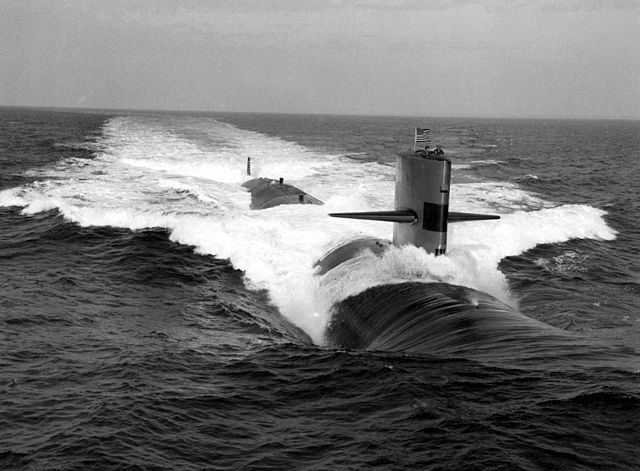
USS G.P. Liscomb underway early in her career, she had a black/grey livery typical of the 1970s.
SSN685 was a very special submarine modified in her dersign to test a new propulsuon and stretched out, laid down at yard 202 at Electric Boat on 5 June 1971, launched on 4 June 1973 and completed on 21 December 1974. She was unsuccessful and stricken in July 1990. That’s the short story.
Glenard P. Lipscomb was developed under project SCB 302.68 as the second US submarine to use a turbo-electric transmission after USS Tullibee. This was to test the advantaged of such propulsion system, notably for quieter/safer operation. One advantage was to be able to use instant reverse thrust by reversing polarity. The Tullibee plant was just scaled up by six times. The end result was to create a brand new,n very long section to house it and a final displacement of 6,400 tons for 365 feet (111 m) in lenght, making Glenard P. Lipscomb the larger SSN to date, but with slower speeds due to the greater displacement. However oafter intensive trials campaigns it was realized this unit was woefully unreliable due to its direct-current main motor.
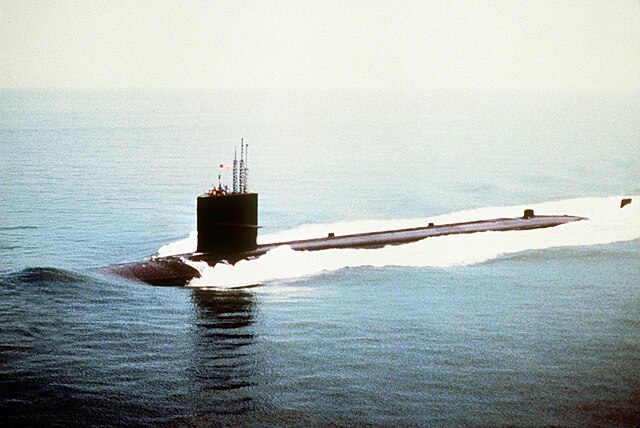
The system was not adopted for the next classes. Instead direct flow reactors such as the S5G tested on Narwhal were preferred. Despite her experimental nature, USS GP. Liscomb was still a fully combat-capable attack submarine and she was deployed to the North Atlantic by the fall of 1976, making operations deployments with the 6th fleet in the Mediterranean by the winter and spring 1977, being awarded the Meritorious Unit Commendation. She was in the North Atlantic in 1978, earning another Meritorious Unit Commendation, then Mediterranean in 1979. As part of Submarine Development Squadron 12, she was awarded its own mdeal, as well as the Battle Efficiency “E”, Engineering Excellence “E” FY1977 and 1978 under Robert B. Wilkinson as well as 1979-1980 under Thomas Robertson.
In 1987 she collided with a tugboat in the Cooper River at Naval Weapons Station Charleston. She needed drydock repairs but the tugboat sank.
She was decommissioned and stricken on 11 July 1990 and went through the Sub recycling program at Puget Sound from 1 December 1997 but her active career had been only 16 years quite short for a SSN worth nearly 20 millions.

⚙ specifications Glenard P. Liscomb |
|
| Displacement | 5,813 tonnes surfaced, 6,480 tonnes submerged |
| Dimensions | 365 ft x 31 ft 8 in (111.2 x 9.65 x 7.80 m) |
| Propulsion | 1 shaft S5W PWR, 2 GE steam turbines, 15,000 shp (11 MW) |
| Speed | 18 knots (33 km/h; 21 mph) surfaced, 23 knots (43 km/h; 26 mph) submerged |
| Armament | Standard Sturgeon class |
| Sensors | BPS-15 radar, BQQ-2 sonar suite, BQS-14 sonar, Mk 113 CCS |
| Crew | 121 |
 USS Parche SSN-683 (1973)
USS Parche SSN-683 (1973)
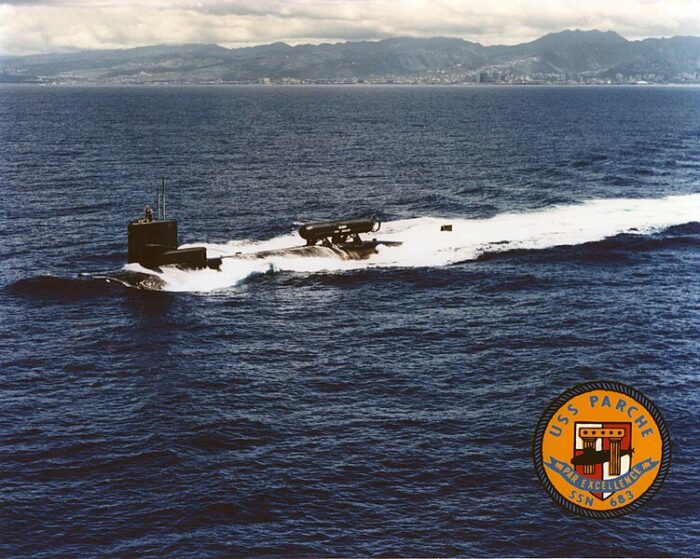
SSN683 Parche was laid down at yard 1176 in Ingalls NyD on 10.12.1970, lauched on 13.1.1973 and completed on 17.8.1974. She was stricken last, in July 2005, after being rebuilt for tests.
From January 1987 to 1991 she was completely rebuilt at Mare Island N Yd. She was lengthened at 122.4 meters in lenght overall 9.65 meters tin bealm and 10.7meters height for a total displacement of 6140 tonnes surfaced and 7140t submerged and re-engined with the S5W2 reactor rated for 20,000hp, for 15 knots surfaced and 30kts submerged. Her crew comprised 147 men. She was equipped to recover objects from the sea bottom as well.
During her career, she was used to recover Soviet missile fragments from the seabed after test launches. When collected in large numbers the missiles could be reconstituted and design determined with more certainty. Parche’s missions remains classified but she also retrieved and placed wire taps placed on Soviet underwater communication cables as well as other clandestine missions, going as far as gathering intel in front of important Soviet bases and facilities. From 1987 to 1991 she had an extended refueling overhaul at Mare Island Naval Shipyard and was modified for R&D, gaining a 100 feet (30 m) section forward of her sail, flat-topped and receiving accomodations to support a larger crew, more equipment and receiving an array of intel-gathering equipments with collecting antennas and electronic gear as well as the most advanced navigational and ocean engineering systems at the time as well as auxiliary navigational and maneuvering features helped by short-range sonars, armored spotlights, closed-circuit television cameras for under-ice and seabed operations, posssibly also retractable wheels.
She entered service with Submarine Development Squadron 5 in the Pacific Fleet from 1992 and transferred to Naval Base Kitsap at Bangor, Washington, by November. She recovered Chinese missile fragments and during the 3rd Taiwan Strait Crisis (1995-1996) most likely recovered Chinese DF-21 and DF-15 ballistic missiles.
She operated that way until decommissioned on 19 October 2004, stricken on 18 July 2005. For her career she earned 9 Presidential Unit Citations, 10 Navy Unit Commendations, 13 Navy Expeditionary Medals. The Submarine Recycling Program was completed 30 November 2006 for her.
⚙ specifications Parche 1994 |
|
| Displacement | 5,813 tonnes surfaced, 6,480 tonnes submerged |
| Dimensions | 401 ft (122 m) x 31 ft 8 in x 28 ft 8 in (9.65 x 8.74 m) |
| Propulsion | As Sturgeon class |
| Speed | 15 knots (28 km/h; 17 mph) surfaced, 25 knots (46 km/h; 29 mph) submerged |
| Armament | Standard Sturgeon class |
| Sensors | BPS-15 radar, BQQ-2 sonar suite, BQS-14 sonar, Mk 113 CCS |
| Crew | 179 |
Legacy: the Los Angeles class
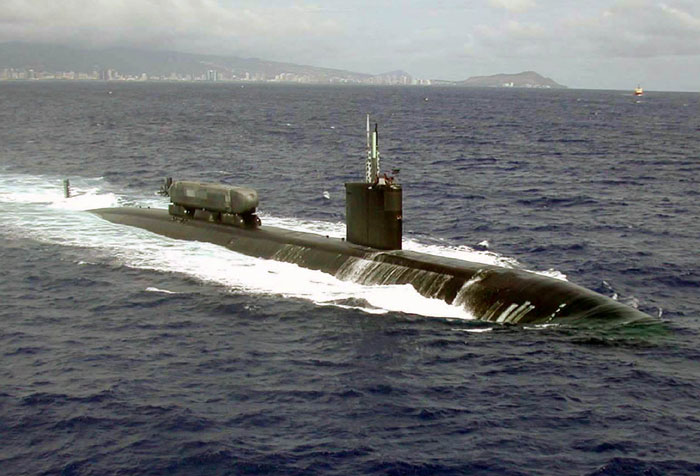
As sure as the Permit class led to the Sturgeons, the Los Angeles class, which development started in 1967 ended approximately 50% larger than the Sturgeons with “major improvements” in stealth and speed to too could keep up with carrier battle groups. 62 were built from 1972 to 1996 and they still made the bulk of today’s US submarine fleet.
This last great SSN class of the Cold War was developed with a much larger size, defined in order to regain the 1958 Skipjack speed range while being quieter than the Sturgeons, keeping track of the fatest Soviet SSNs in a genesis started in 1965. USS Los Angeles was laid down in January 1972, three months after the last Sturgeon, USS Richard B Russel at Newport News. The great novelry was a S6G reactor which had double the power and was largely based on the work done on USS narwhal. She reached 31 knots but this was somewhat at the expense of strenght hull, and very significant decrease in diving operational depth. The other innovation was the new BQQ-5 sonar and its improved towed sonar component.
Though a new, stronger steel hull was designed for them, it not approved due to budget cuts as well as the new computerized fire control system Mk.112. The Mk.117 was only installed from USS Dallas (1979) onwards. It was also anticipated in first studies back in 1968 to give them 20 vertical tubes for anti-ship missiles but the complexity of the system and spiralling up cost plus displacement calculated to 13,700 tons had it rejected by Admiral Zumwalt. The Los Angeles had more torpedoes (26), while offering the same range as the Sturgeons, including SUBROC/Harpoon and Tomahawk.
In 1981, USS La Jolla was the first to launch encapsulated Tomahawk missiles, a system only operational from USS Atlanta in 1983. From USS Providence in 1985, a section with 12 silos equipped with Tomahawks were forward of the sail. From USS San Juan (1986) the class adopted the new BSY-1 combat system plus new retractable bow fins. From USS Hartford (SSN-768, 1993) the tail was modified to resemble that of the new generation Seawolf class. A total of 42 were in service by 1990, another 19 post-cold war constituting the world’s largest SSN class in twenty years.
Career of The Sturgeon class
Short Hulls
 USS Sturgeon SSN-637 (1966)
USS Sturgeon SSN-637 (1966)
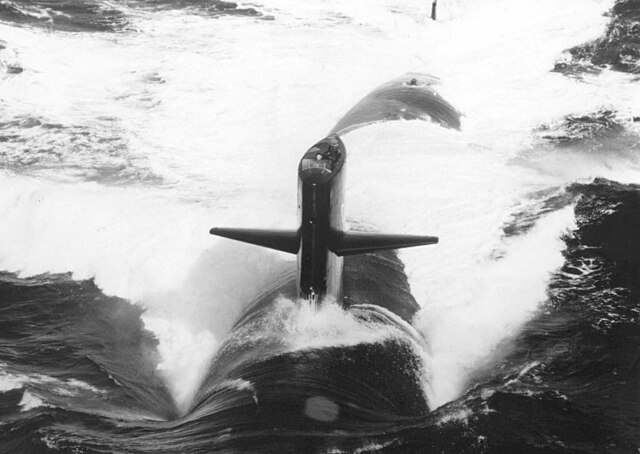
SSN637 was laid down at yard 168 in Electric Boat, Groton on 10.8.1963, launched on 26.2.1966 and completed on 3.3.1967. She spent a month in refresher training before a shakedown cruise on 3 April 1967 on the East Coast and Puerto Rico, then back to Groton for fixes and maintenance, then additional training qualifications until 18 September 1967, after which she sailed in early trials operations, back on 2 October 1967, and transferred to Submarine Development Group 2. On 22 January 1968 she trained in ASW for five-week to compare her to the Permit-class.
Next she had a three-month post-shakedown from 3 March 1968 until June 1968. She took part in the search for the missing USS Scorpion (Skipjack class) off the Azores. This summer, she was prepared for overseas deployment from September to early November 1968 and evaluating a new sonar detection device until February 1969. She was visited when stopping at Annapolis, Maryland by March 1969 followed by more training in May-July 1969 and earning a Meritorious Unit Commendation.
She took part in exercises in August-September 1969 and CNO’s personal exercises from 29 September to 31 October 1969, being awarded a second Meritorious Unit Commendation by December. She ade another deployment from 29 January to 8 April 1970 and by May-June was used for aircraft ASW tactics and equipment. More exercises followed in July 1970 and from 15 August to 1 September, sound trials. On 5 October 1970 she was overhauled at Groton until 5 October 1971, being awarded a Navy Unit Commendation for “exceptionally meritorious service”.
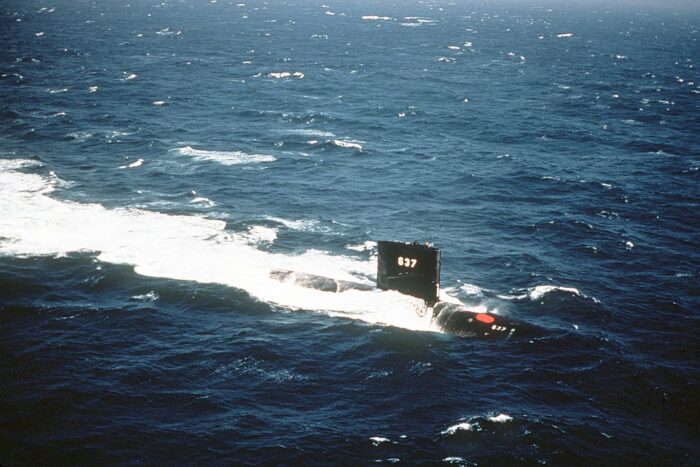
Next she was sent to her first operational unit, Submarine Squadron 10, homeported to New London, Connecticut, had a refresher training, a shakedown cruise (6 October-15 December 1971 and then until in upkeep. She was in two ASW exercises and overhaul at Groton from 6 March to 27 May 1972, sea trials until 15 July, then sonar systems tests until mid-December 1972. From 1 January to 2 April 1973 she stayed in local waters off Narragansett Bay. On 3 April 1973 she went to the Weapons Range in the Caribbean but on 21 May, ran aground near St. Croix (Virgin Islands), her bow chin damaged, and she was back to Groton on 4 June for repairs until 17 July. Until October 1973 she was in exercises and entered Portsmouth for proper bow repairs until 22 April 1974. She operated from New London until 13 August 1974, then Norfolk for Atlantic Readiness Exercise 1-75. Her first true overseas movement from 29 November 1974 was to the Mediterranean, 6-month from 9 December 1974 and ex. ICEX ’89 in which she surfaced through ice in the Arctic Circle.
She had a refit at Charleston as Hurricane Hugo struck and could be scrambled to leave port as storm started, avoiding damage.
Missing logs for 1975-1993.
She was decommissioned on 1 August 1994, stricken on august 1994. She entered the Nuclear-Powered Ship and Submarine Recycling Program at Puget Sound Naval Shipyard in Bremerton, Washington, process done by 11 December 1995..
 USS Whale SSN638 (1966)
USS Whale SSN638 (1966)
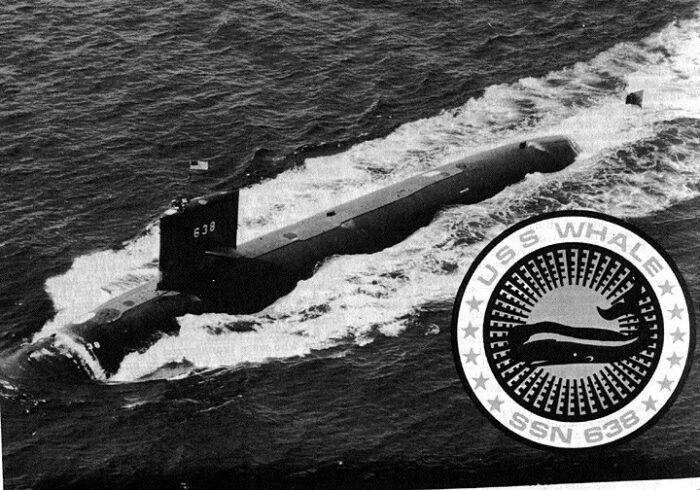
SSN638 was laid down at General Dynamics in Quincy on 27.5.1964 and launched on 14.10.1966, completed on 12.10.1968. She was stricken in June 1996.
 USS Tautog SSN-639 (1967)
USS Tautog SSN-639 (1967)
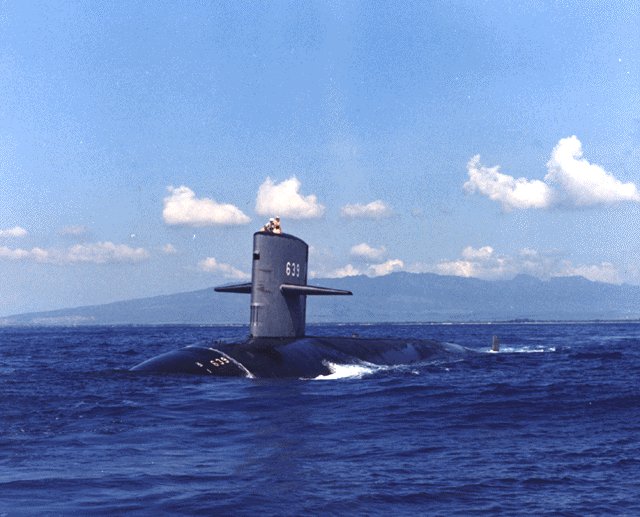
SSN639 was laid down at yard 1098 in Ingalls, Pascagoula on 27.1.1964, launched in 15.3.1967 and completed on 17.8.1968. She was stricken in April 1997.
 USS Grayling SSN-646 (1967)
USS Grayling SSN-646 (1967)
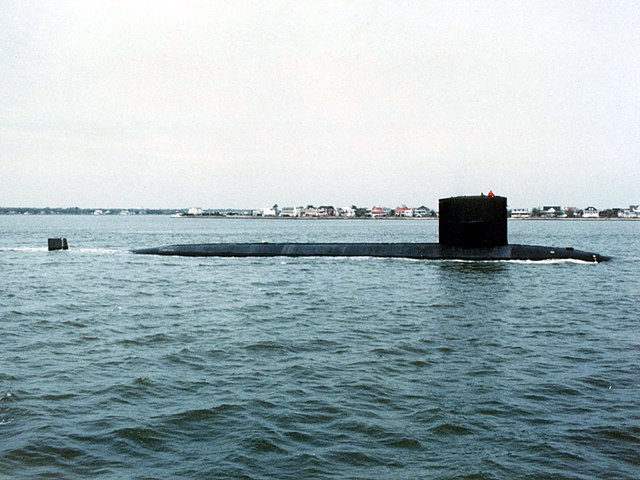
SSN646 was laid down at Portsmouth N Yd in Kittery, Main on 12.5.1964, launched on 22.6.1967 and completed on 11.10.1969. She was stricken on July 1997.
 USS Pogy SSN-647 (1967)
USS Pogy SSN-647 (1967)

SSN647 was laid down at yard 1167 in New York SB, Camden on 5.5.1964, launched 3.6.1967 and completed at Ingalls, Pascagoula on 15.5.1971. She was stricken in June 1999.
 USS Aspro SSN-648 (1967)
USS Aspro SSN-648 (1967)
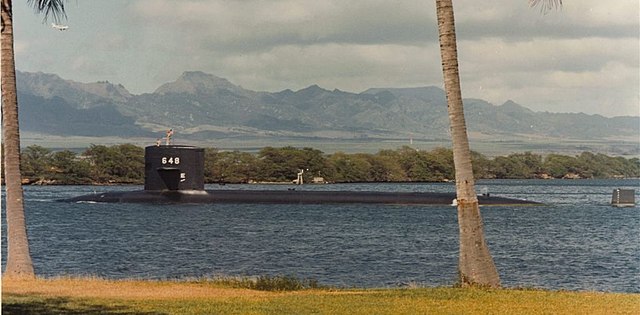
SSN648 was laid down at yard 1103 in Ingalls, Pascagoula on 23.11.1964, launched on 29.11.1967 and completed on 20.2.1969. She was stricken on march 1995.
 USS Sunfish SSN-649 (1966)
USS Sunfish SSN-649 (1966)
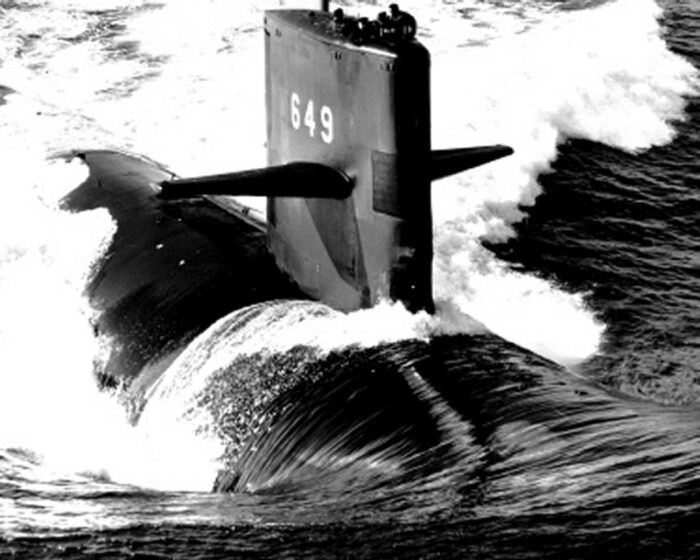
SSN649 was laid down at yard 2, General Dynamics, Quincy on 15.1.1965, launched on 14.10.1966 and completed on 15.3.1969. She was stricken in March 1997.
 USS Pargo SSN-650 (1966)
USS Pargo SSN-650 (1966)
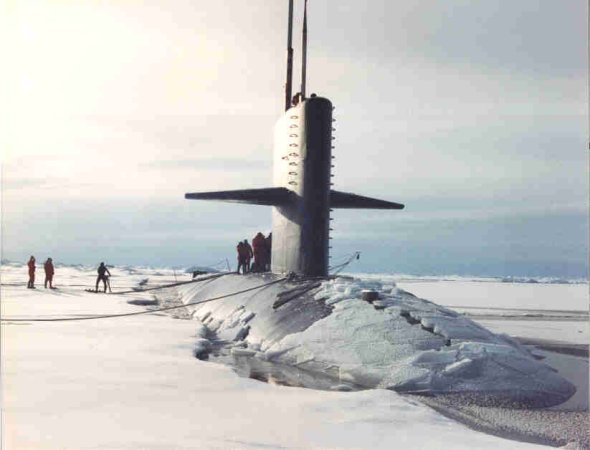
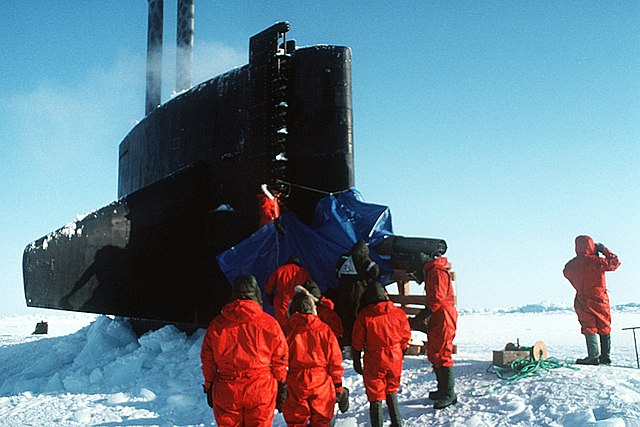
SSN650 was laid down at yard 174 in Electric Boat, Groton on 3.6.1964, launched on 17.9.1966 and completed on 5.1.1968. She was stricken in April 1995.
 USS Queenfish SSN-651 (1966)
USS Queenfish SSN-651 (1966)
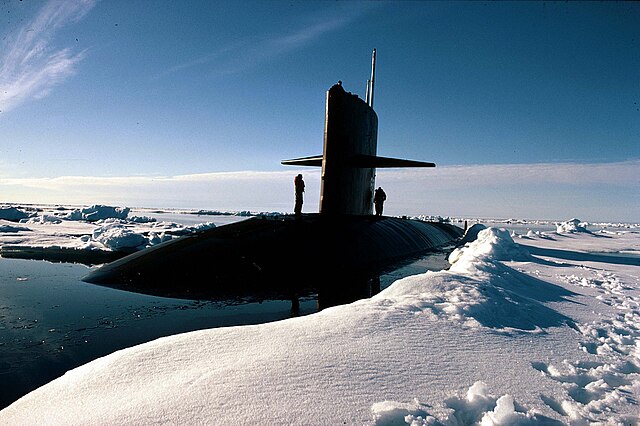
SSN651 was laid down at yard 571 in Newport News SB on 11.5.1964, launched 25.2.1966 and completed in 6.12.1966, stricken in April 1992.
 USS Puffer SSN-652 (1968)
USS Puffer SSN-652 (1968)
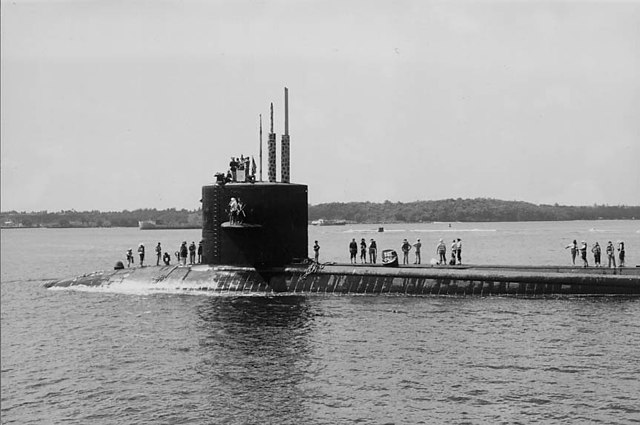
SSN652 was laid down at yard 1109 at Ingalls, Pascagoula on 8 Febuary 1965, launched on 30.3.1968 and completed in 9.8.1969. She was stricken in July 1996.
 USS Ray SSN-SSN653 (1966)
USS Ray SSN-SSN653 (1966)
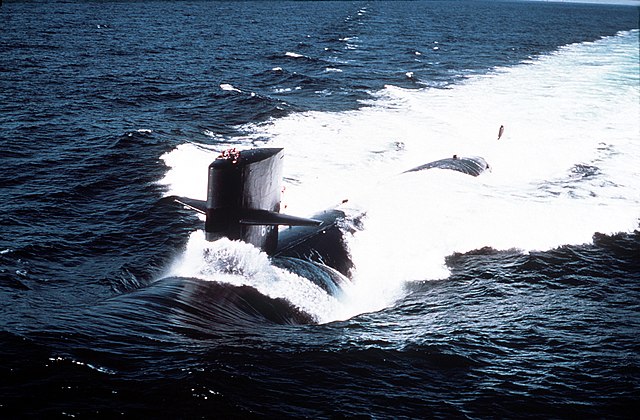
Ray was laid down at yard 573 in Newport News SB on 4.1.1965, launched on 21.6.1966 and completed on 12.4.1967. She was stricken on March 1993.
 USS Sand Lance SSN-660 (1969)
USS Sand Lance SSN-660 (1969)
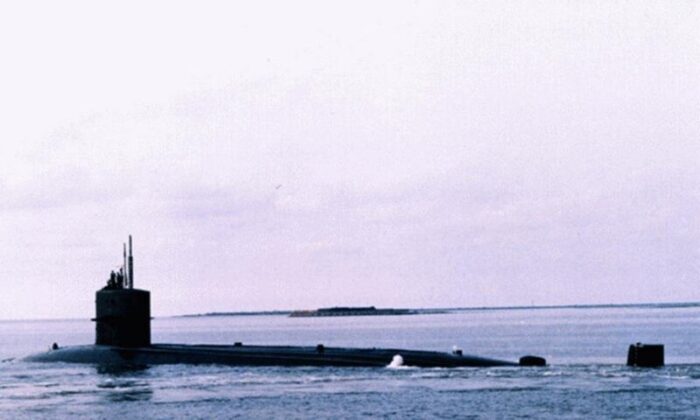
USS Sand Lance was laid down at Portsmouth N Yd on 28.10.1967, launched on 11.11.1969 and completed on 25.9.1971. She was stricken in August 1998.
 USS Lapon SSN-661 (1966)
USS Lapon SSN-661 (1966)
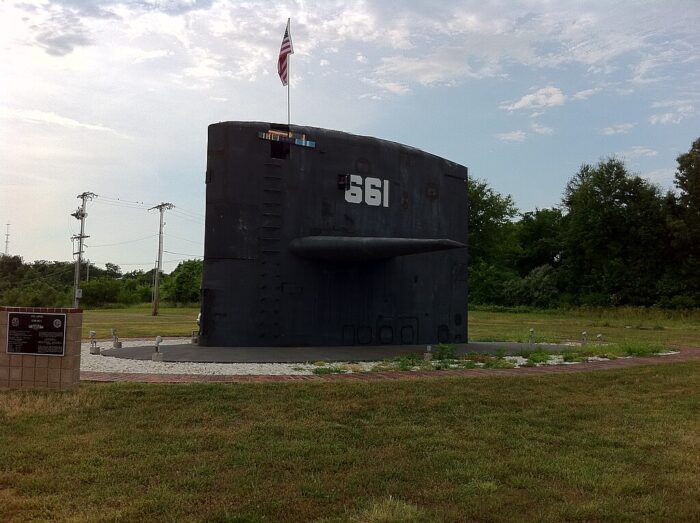
USS Lapon was laid down at yard 578 in Newport News SB on 27.7.1965, launched on 16.12.1966 and completed on 14.12.1967. She was stricken in August 1992.
 USS Gurnard SSN-662 (1963)
USS Gurnard SSN-662 (1963)
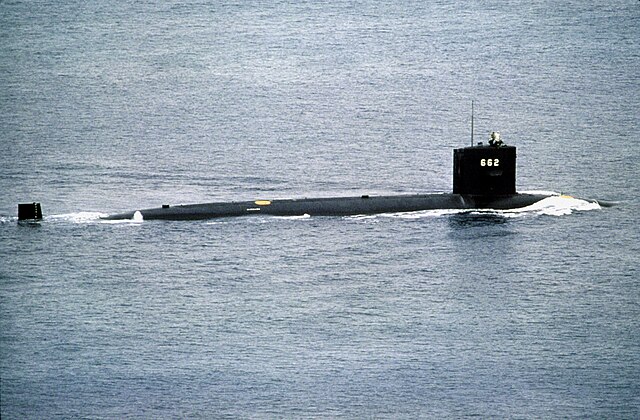
SSN662 was laid down at Mare Island N Yd in Vallejo on 22.12.1964, launched on 20.5.1967 and completed on 6.12.1968. She was stricken in April 1995.
 USS Hammerhead SSN-663 (1967)
USS Hammerhead SSN-663 (1967)
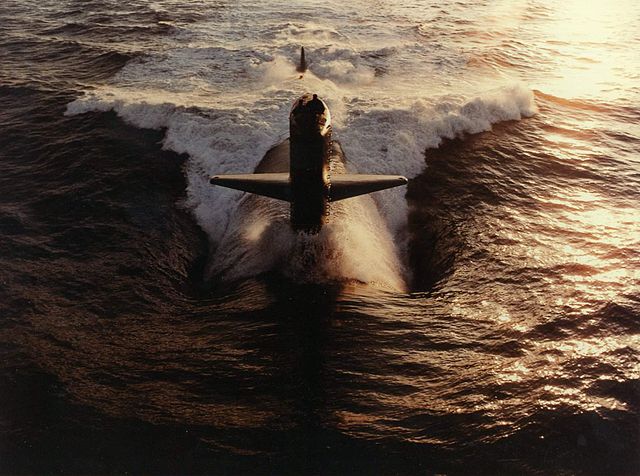
SSN663 was laid down at yard 579 in Newport News SB on 29.11.1965, launched 14.4.1967 and completed on 28.6.1968. She was stricken in April 1995
 USS Sea Devil SSN-664 (1967)
USS Sea Devil SSN-664 (1967)
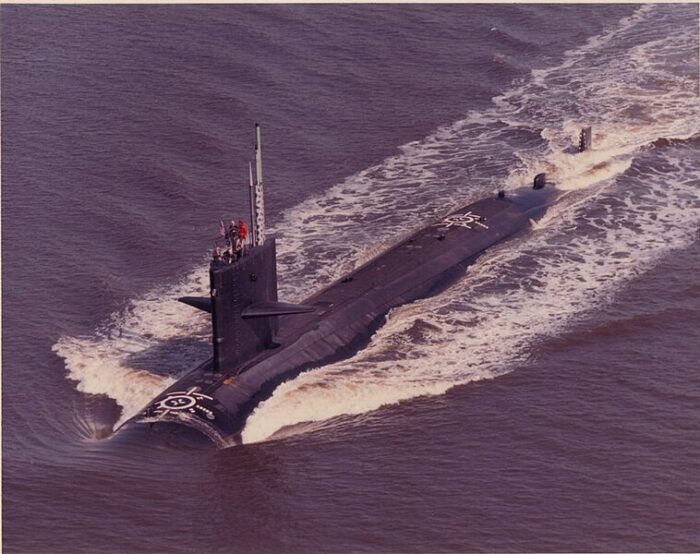
SSN664 was laid down at yard 580 in Newport News SB on 12.4.1966, launched on 5.10.1967 and completed on 28.6.1968. She was stricken in October 1991.
 USS Guitarro SSN-665 (1963)
USS Guitarro SSN-665 (1963)
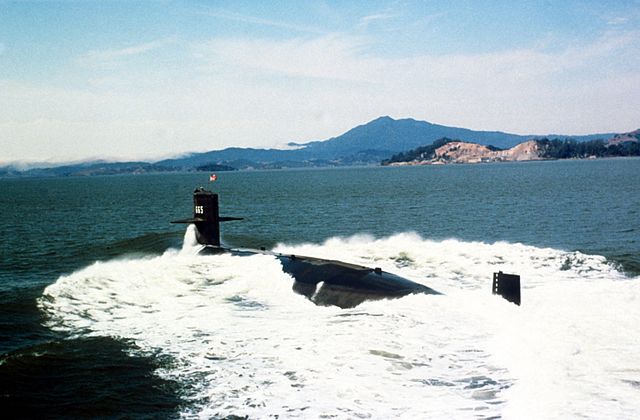
SSN665 was laid down at Mare Island N Yd, Vallejo on 9.12.1965, launched 27.7.1968, completed 9.9.1972, stricken 5.1992.
 USS Hawkbill SSN-666 (1969)
USS Hawkbill SSN-666 (1969)
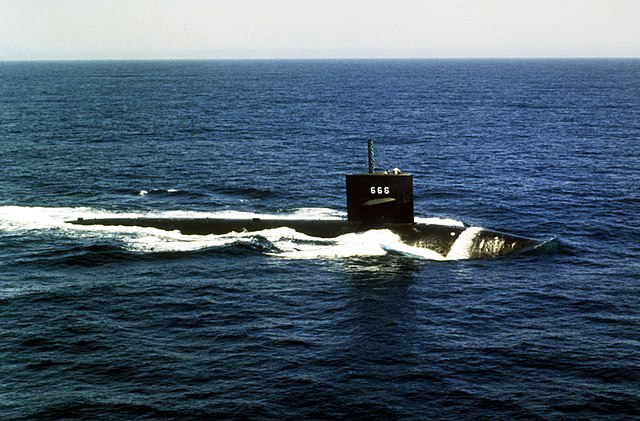
SSN666 was laid down at Mare Island N Yd in Vallejo on 12.9.1966, launched on 12.4.1969 and completed on 4.2.1971. She was stricken in April 2000.
 USS Bergall SSN-667 (1968)
USS Bergall SSN-667 (1968)
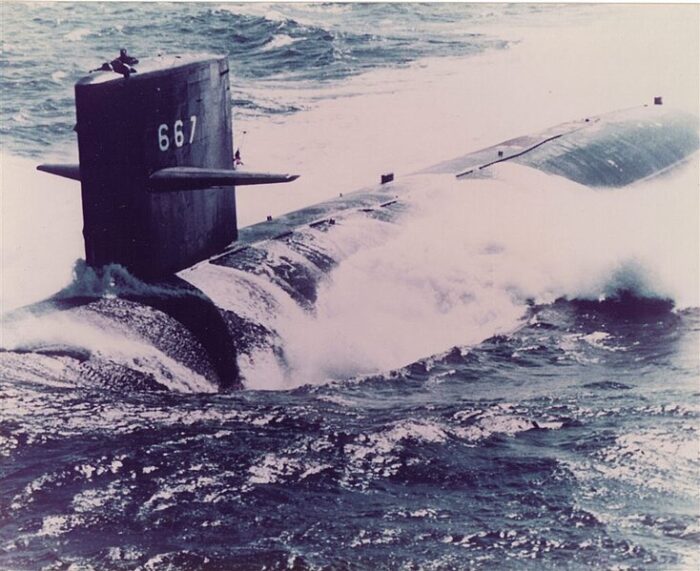
SSN667 was laid down at yard 185, Electric Boat in Groton, laid down on 4.4.1966 and launched on 17.2.1968. She was decommissioned 13.6.1969. She was stricken in June 1997.
 USS Spadefish SSN-581 (1968)
USS Spadefish SSN-581 (1968)
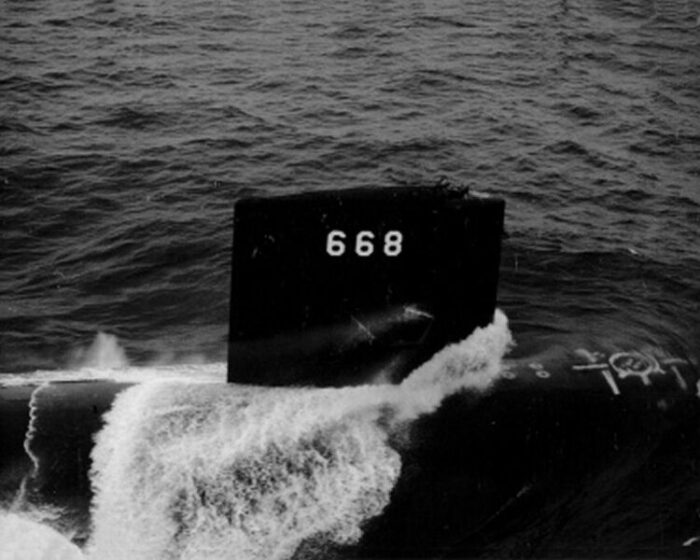
SSN668 was laid down at yard 581 in Newport News SB on 21.12.1966, launched on 15.5.1968 and completed in 14.8.1969. She was stricken in April 1997.
 USS Seahorse SSN-669 (1968)
USS Seahorse SSN-669 (1968)
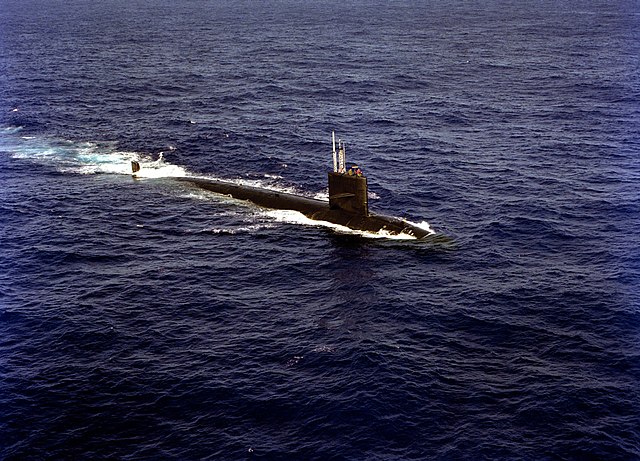
SSN669 was laid down at Yard 189 in Electric Boat, Groton on 13.8.1966, launched on 15.6.1968, completed in 19.9.1969. She was stricken 8.1995.
 USS Finback SSN-582 (1968)
USS Finback SSN-582 (1968)
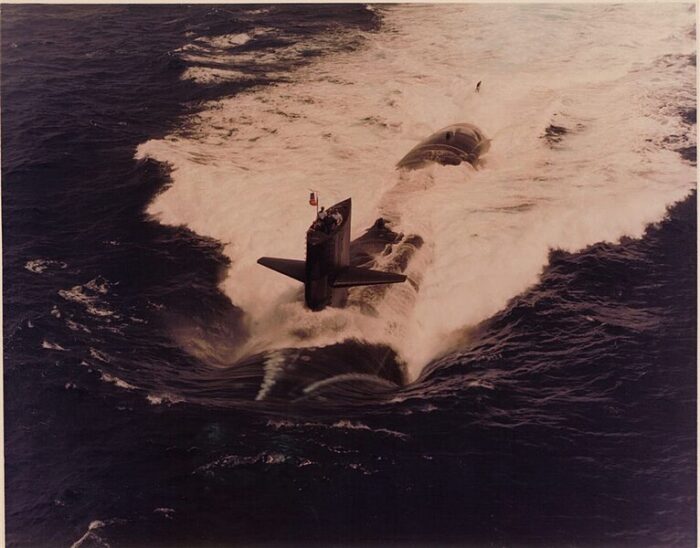
SSN670 was laid down at 582 in Newport News SB on 26.6.1967, launched on 7.12.1968 and completed on 4.2.1970. She was stricken in March 1997.
 USS Pintado SSN-672 (1969)
USS Pintado SSN-672 (1969)
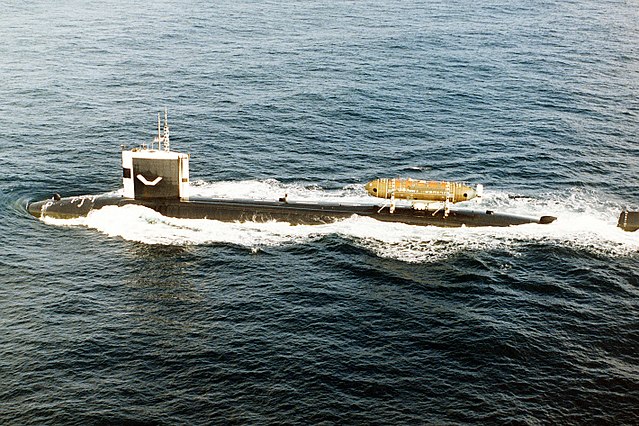
SSN672 was laid down at Mare Island N Yd in Vallejo on 27.10.1967, launched on 16.8.1969 and completed on 11.9.1971, she was stricken in Feb. 1998.
 USS Flying Fish SSN-673 (1969)
USS Flying Fish SSN-673 (1969)
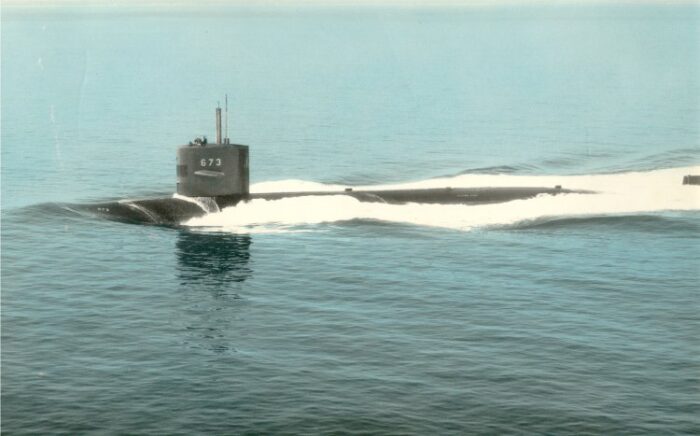
SSN673 was laid down at yard 193 at Electric Boat, Groton on 30.6.1967, launched 17.5.1969 and completed on 29.4.1970. She was stricken in May 1996.
 USS Trepang SSN-SSN674 (1969)
USS Trepang SSN-SSN674 (1969)
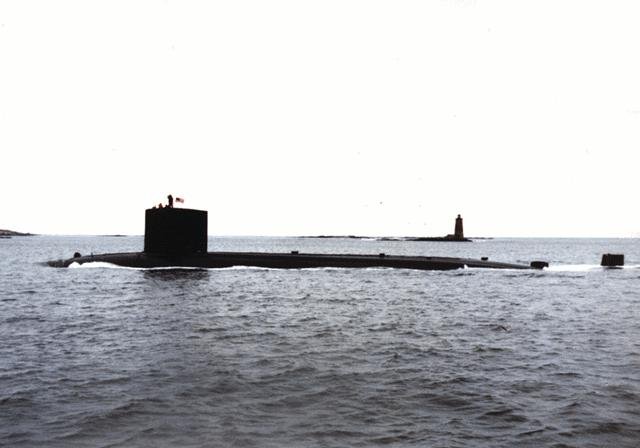
She was laid down at yard 195 at Electric Boat on 28.10.1967, launched on 27.9.1969 and completed on 14.8.1970. She was stricken in June 1999.
 USS Bluefish SSN-675 (1963)
USS Bluefish SSN-675 (1963)

SSN675 was laid down at yard 196 in Electric Boat on 13.3.1968, launched on 10.1.1970 and completed on 8.1.1971. She was stricken by June 1996.
 USS Billfish SSN-676 (1963)
USS Billfish SSN-676 (1963)
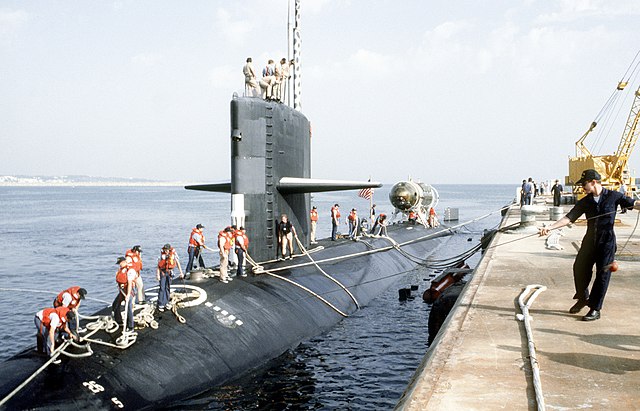
SSN676 was laid down at Electric Boat on 20.9.1968, launched on 1 May 1970 and completed on 12.3.1971. She was stricken in july 1999.
 USS Drum SSN-677 (1963)
USS Drum SSN-677 (1963)
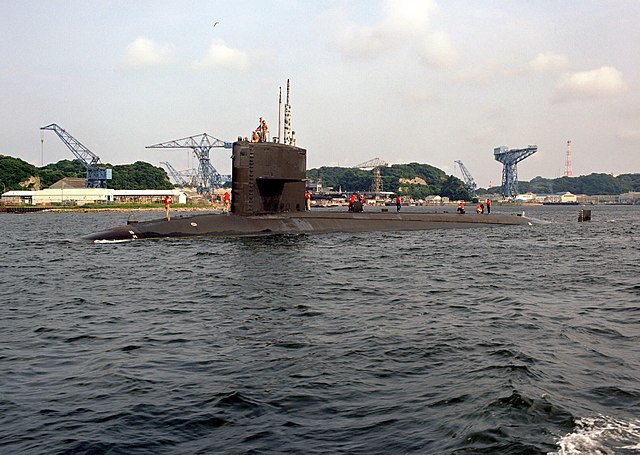
SSN677 Drum was laid down at Mare Island N Yd in Vallejo on 20.8.1968, launched on 23.5.1970, commissioned on 15.4.1972. She was stricken on October 1995.
Long Hulls
 USS 678 SSN-Archerfish (1963)
USS 678 SSN-Archerfish (1963)

Archerfish was laid down at yard 198 in Electric Boat, Groton on 19 June 1969, launched on 16.1.1971 and completed on 17.12.1971. She was stricken in April 1998.
 USS Silversides SSN-679 (1963)
USS Silversides SSN-679 (1963)
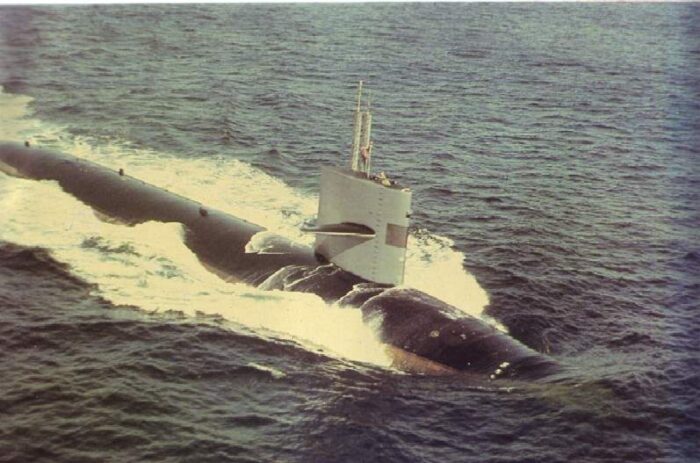
Silversides was laud down at yard 199 of Electric Boat on 28.11.1969, launched 4 June 1971 and completed on 5 May 1972. She was stricken in July 1994.
 USS William H. Bates (ex-Redfish) SSN-680 (1963)
USS William H. Bates (ex-Redfish) SSN-680 (1963)
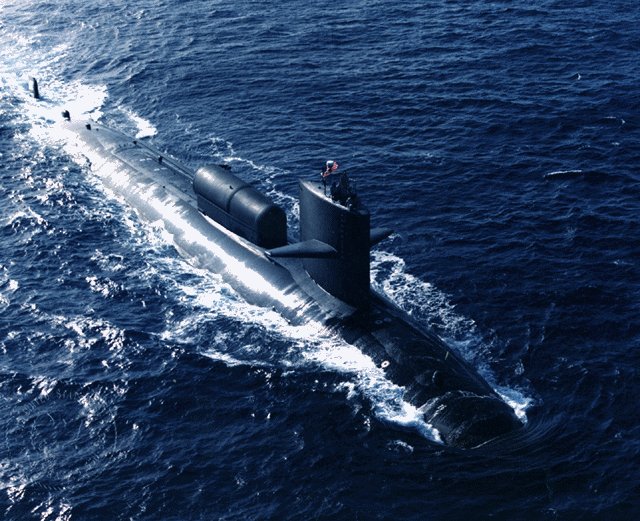
Laid down as USS Redfish at yard 1174 in Ingalls, Pascagoula on 4.8.1969, she was renamed before launch on 11.12.1971 as William H. Bates and completed on 5.5.1973. She was stricken in February 2000.
 USS Batfish SSN-681 (1963)
USS Batfish SSN-681 (1963)

Batfish was laid down at yard 200 of Electric Boat on 9.2.1970, launched on 9.10.1971 and completed by 5 May 1972. She was stricken in April 1999.
 USS Tunny SSN-682 (1972)
USS Tunny SSN-682 (1972)
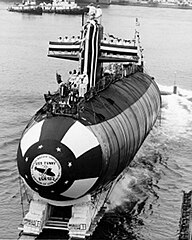 SSN682 was laid down at yard 1175 in Ingalls, Pascagoula on 22.5.1970, launched on 10.6.1972 and completed on 26.1.1974. She was stricken in April 1998.
SSN682 was laid down at yard 1175 in Ingalls, Pascagoula on 22.5.1970, launched on 10.6.1972 and completed on 26.1.1974. She was stricken in April 1998.
 USS Cavalla SSN-684 (1972)
USS Cavalla SSN-684 (1972)
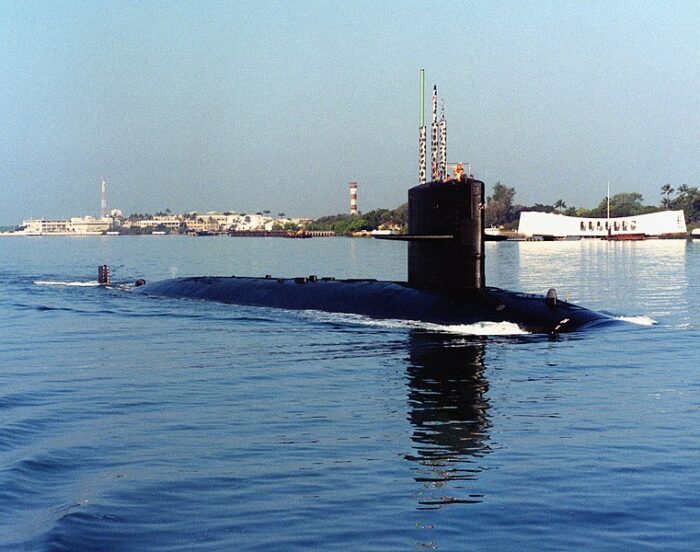
USS Cavalla was laid down ay yard 201 in Electric Boat on 23.5.1970, launched on 19.2.1972 and completed on 9.2.1973. She was stricken in April 1998.
 USS L. Mendel Rivers SSN-686 (1973)
USS L. Mendel Rivers SSN-686 (1973)
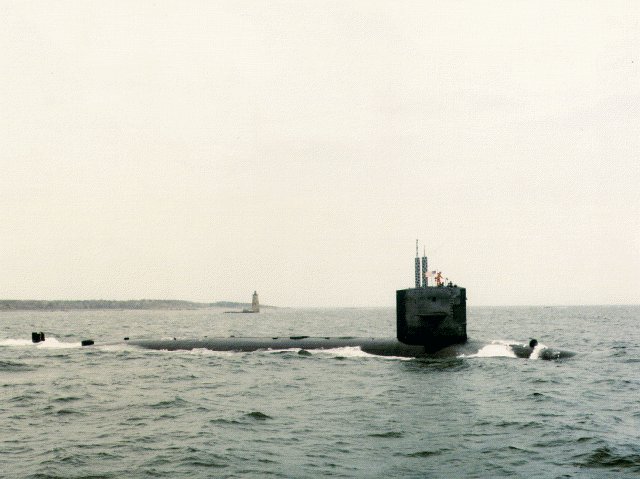
She was laid down at yard 597 in Newport News on 26 June 1971, launched on 2 June 1973 and completed on 1st Feb. 1975. She was stricken in May 2001.
 USS Richard B. Russell SSN-687 (1974)
USS Richard B. Russell SSN-687 (1974)
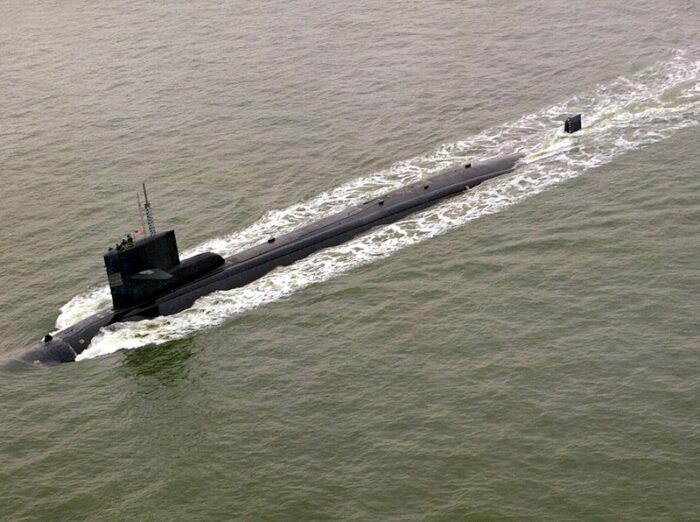
SSN-687 was the last Sturgon class, laid down at yard 598 in Newport News SB on 19 October 1971, launched on 12 Jan 1974 and completed on 16 August 1975. She was stricken in June 1994.

Read More/Src
Books
Links
A Brief History of The Push-Pull of Submarine Combat Control Systems
https://www.history.navy.mil/research/histories/ship-histories/danfs/s/sturgeon-iii.html
https://web.archive.org/web/20150814124605/http://www.history.navy.mil/museums/keyport/pdfs/sturgeonsail.pdf
http://www.hisutton.com/Sturgeon_SSN.html
http://www.hisutton.com/USS_Parche.html
description of the class on gao.gov/ pdf
navypedia.org/ sturgeon
http://www.navsource.org/archives/08/08637.htm
https://www.rayunion.net/Bottomguns/653boat.html
en.wikipedia.org Permit-class_submarine
Videos
Model Kits
Main query on scalemates
Mikro Mir 350-004 SSN-637 Sturgeon US NAVY submarine 264 mm scale 1/350
https://sdmodelmakers.com/sturgeon-class-submarine-model-12-inch.html
USS Sturgeon SSN-637 Blue Water Navy | No. BN-35025 | 1:350
https://modelshipworld.com/topic/11397-uss-flying-fish-ssn-673-by-torpedochief-finished-yankee-model-works-1350-scale-resin/
Full plans on Ebay
3D
https://free3d.com/3d-model/uss-sturgeon-submarine-6353.html

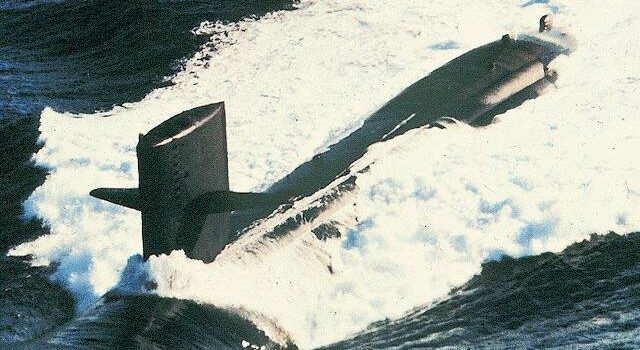
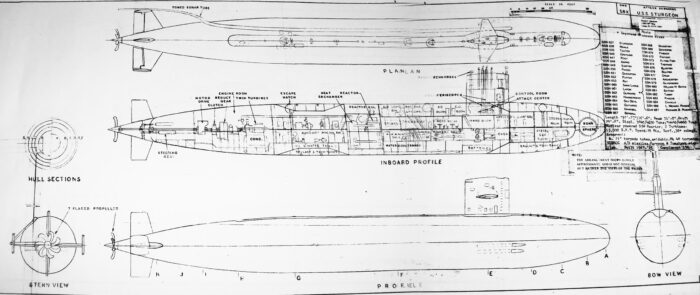

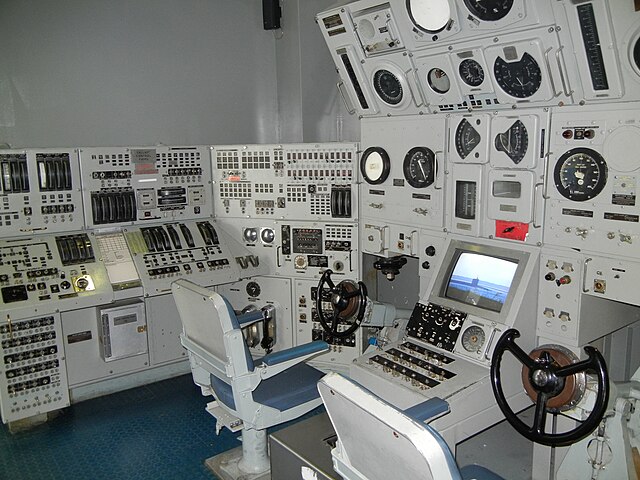


 Latest Facebook Entry -
Latest Facebook Entry -  X(Tweeter) Naval Encyclopedia's deck archive
X(Tweeter) Naval Encyclopedia's deck archive Instagram (@navalencyc)
Instagram (@navalencyc)





 French Navy
French Navy Royal Navy
Royal Navy Russian Navy
Russian Navy Armada Espanola
Armada Espanola Austrian Navy
Austrian Navy K.u.K. Kriegsmarine
K.u.K. Kriegsmarine Dansk Marine
Dansk Marine Nautiko Hellenon
Nautiko Hellenon Koninklije Marine 1870
Koninklije Marine 1870 Marinha do Brasil
Marinha do Brasil Osmanlı Donanması
Osmanlı Donanması Marina Do Peru
Marina Do Peru Marinha do Portugal
Marinha do Portugal Regia Marina 1870
Regia Marina 1870 Nihhon Kaigun 1870
Nihhon Kaigun 1870 Preußische Marine 1870
Preußische Marine 1870 Russkiy Flot 1870
Russkiy Flot 1870 Svenska marinen
Svenska marinen Søværnet
Søværnet Union Navy
Union Navy Confederate Navy
Confederate Navy Armada de Argentina
Armada de Argentina Imperial Chinese Navy
Imperial Chinese Navy Marinha do Portugal
Marinha do Portugal Mexico
Mexico Kaiserliche Marine
Kaiserliche Marine 1898 US Navy
1898 US Navy Sovietskiy Flot
Sovietskiy Flot Royal Canadian Navy
Royal Canadian Navy Royal Australian Navy
Royal Australian Navy RNZN Fleet
RNZN Fleet Chinese Navy 1937
Chinese Navy 1937 Kriegsmarine
Kriegsmarine Chilean Navy
Chilean Navy Danish Navy
Danish Navy Finnish Navy
Finnish Navy Hellenic Navy
Hellenic Navy Polish Navy
Polish Navy Romanian Navy
Romanian Navy Turkish Navy
Turkish Navy Royal Yugoslav Navy
Royal Yugoslav Navy Royal Thai Navy
Royal Thai Navy Minor Navies
Minor Navies Albania
Albania Austria
Austria Belgium
Belgium Columbia
Columbia Costa Rica
Costa Rica Cuba
Cuba Czechoslovakia
Czechoslovakia Dominican Republic
Dominican Republic Haiti
Haiti Hungary
Hungary Honduras
Honduras Estonia
Estonia Iceland
Iceland Eire
Eire Equador
Equador Iran
Iran Iraq
Iraq Latvia
Latvia Liberia
Liberia Lithuania
Lithuania Mandchukuo
Mandchukuo Morocco
Morocco Nicaragua
Nicaragua Persia
Persia San Salvador
San Salvador Sarawak
Sarawak Uruguay
Uruguay Venezuela
Venezuela Zanzibar
Zanzibar Warsaw Pact Navies
Warsaw Pact Navies Bulgaria
Bulgaria Hungary
Hungary

 Bundesmarine
Bundesmarine Dutch Navy
Dutch Navy Hellenic Navy
Hellenic Navy Marina Militare
Marina Militare Yugoslav Navy
Yugoslav Navy Chinese Navy
Chinese Navy Indian Navy
Indian Navy Indonesian Navy
Indonesian Navy JMSDF
JMSDF North Korean Navy
North Korean Navy Pakistani Navy
Pakistani Navy Philippines Navy
Philippines Navy ROKN
ROKN Rep. of Singapore Navy
Rep. of Singapore Navy Taiwanese Navy
Taiwanese Navy IDF Navy
IDF Navy Saudi Navy
Saudi Navy Royal New Zealand Navy
Royal New Zealand Navy Egyptian Navy
Egyptian Navy South African Navy
South African Navy






























 Ukrainian Navy
Ukrainian Navy dbodesign
dbodesign